
Winter 2018 • Number 30
Celebrating the Local Food and Drink of Santa Cruz, Monterey and San Benito Counties
COOKING WITH MUSHROOMS GLOBAL ORGANIC • HOT CHOCOLATE • EL NOPAL DUNGENESS CRAB • MUTUAL MEDICINE
Member of Edible Communities
Named for the number of minutes in a day, 1440 Multiversity is a new learning destination in the California redwoods between Santa Cruz and Silicon Valley. Enjoy cutting-edge weekend and 5-day programs in personal, professional, and spiritual growth alongside unforgettable moments of relaxation and renewal.
JANUARY 4 – 6, 2019
The China Study in Practice: Go from Good to Great with Plant-Based Foods
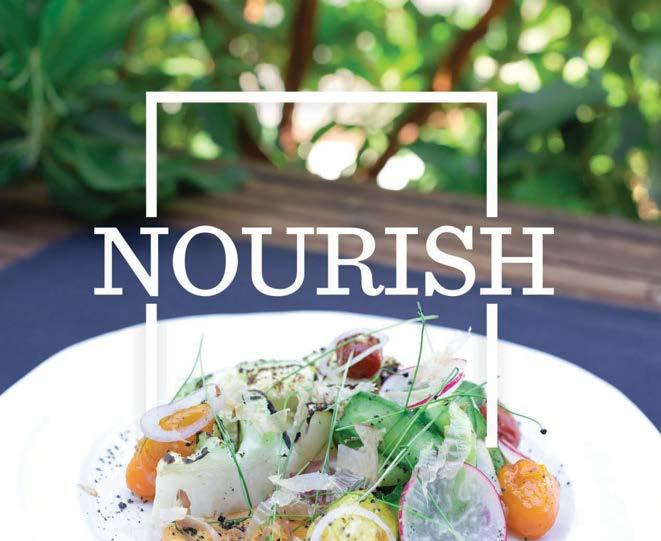
FEBRUARY 15 – 17, 2019
The Paleo Mom Workshop and Retreat
MARCH 22 – 24, 2019
ANDREW WEIL ET AL.

Optimal Health Within Reach: Learn the Healthy-Aging Tools of Integrative Medicine


ii edible MONTEREY BAY WINTER 2018 1440.ORG/EMB | SCOTTS VALLEY, CA | 1-844-544-1440
SARAH BALLANTYNE
THOMAS M. CAMPBELL & ERIN CAMPBELL
on
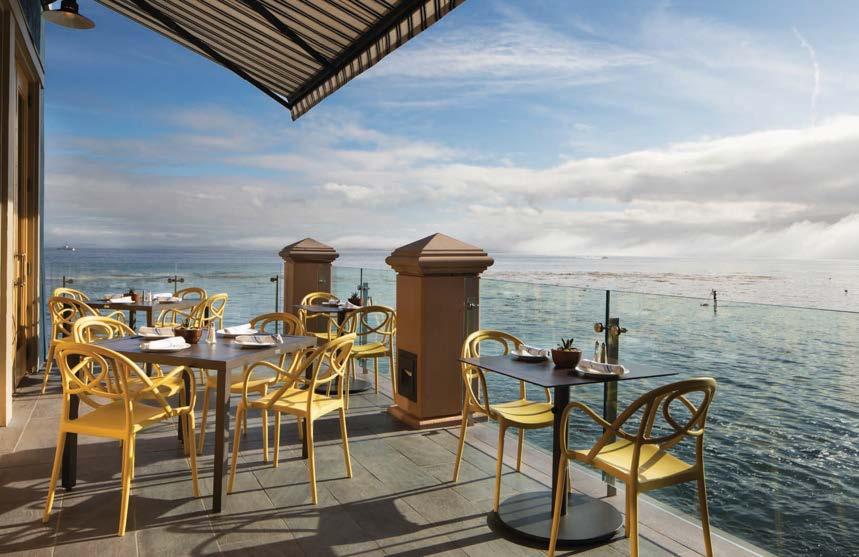
Schooners’ newly renovated patio with
of the
Bay. Now serving the most important meal of the day, complete with incredible vistas and unrivaled service. Start your day at Schooners! Reservations: 831-372-2628 | SchoonersMonterey.com Monterey Plaza Hotel & Spa Enjoy Breakfast on Schooners Patio every Saturday and Sunday from
Breakfast
the Bay Experience
sweeping views
Monterey
9am-11am
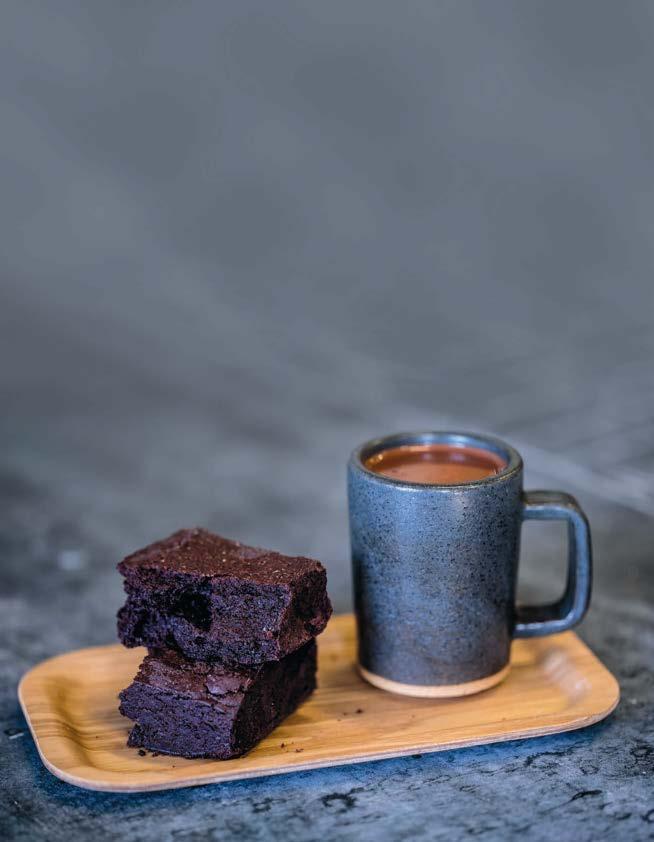
Contents 2 edible MONTEREY BAY WINTER 2018 4 GRIST FOR THE MILL 6 EDIBLE NOTABLES Sweet times for award-winning Mutari Chocolate in Santa Cruz; Hollister’s best little Mexican-style bakery is a long family tradition; Olive oil is putting tiny San Ardo on the map, with a fth-generation family ranch now a modern day agricultural success 18 WHAT’S IN SEASON DUNGENESS CRAB Master of the winter table and essential catch for the local eet 29 FOODSHED WINTER FARMERS’ MARKETS A complete guide for the Monterey Bay area 32 BACK OF THE HOUSE GLOBAL ORGANIC Sustainably sourced international cuisine is more diverse and plentiful than ever before in the Monterey Bay area 39 IN THE KITCHEN TALKING SHIITAKE Whether foraged, cultivated or home grown, mushrooms are a passion for chef John Cox 47 BEHIND THE BOTTLE VINTAGE FRIENDSHIPS Now in its 42nd year, Redwood+Vine is a place for do-it-yourself winemakers 50 EDIBLE COMMUNITY MUTUAL MEDICINE Cooking for friends in need 54 THE PRESERVATIONIST ORANGE CRANBERRY MARMALADE Perfect for a winter holiday breakfast or brunch 57 DINE LOCAL GUIDE 72 LAST BITE BROWN BUTTER-BAY LAUREL COOKIES Irresistibly rich and savory RECIPES IN THIS ISSUE 24 Dungeness Crab Lasagna with Greens and Mushrooms 24 Endive Salad with Shaved Fennel, Persimmons and Dungeness Crab 37 Cashew Cauli ower Curry 45 Big Sur Chanterelle Risotto 54 Orange Cranberry Marmalade 72 Brown Butter-Bay Laurel Cookies COVER PHOTOGRAPH Yellow oyster mushrooms at Far West Fungi in Moss Landing by Patrick Tregenza CONTENTS PHOTOGRAPH Decadent brownies and drinking chocolate at Mutari in Santa Cruz by Patrick Tregenza

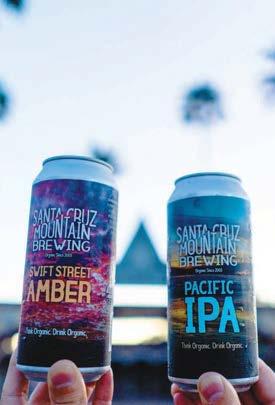










www.ediblemontereybay.com 3 Now Available! Santa Cruz Mountain Brewing 402 Ingalls Street, Suite 27, Santa Cruz, CA 95060 831.425.4900 | www.scmbrew.com Certified Organic Ales in cans. Swift Street Amber and Pacific IPA At your local retailer or visit Santa Cruz Mountain Brewing to get some.
GRIST FOR THE MILL edible MONTEREY
EDITOR AND PUBLISHER
To be honest, winter is not my favorite season. I’ll take the tender pea shoots of spring, the juicy apricots of summer or late harvest tomatoes in fall, over pumpkin pie and fruitcake any time. But our short winter in the Monterey Bay area is nothing to complain about. The weather is often glorious and the envy of the nation. Even the rainiest days provide a good opportunity to cozy up and do some serious cooking or baking. And, of course, it’s the season to gather with friends and family to celebrate the year that just flew right by and make plans for the year to come.
For our winter issue we’ve tried to pull together some of the treats that brighten these short days, starting with Dungeness crab! Like many Santa Cruzans, crab cioppino has been our traditional Christmas Eve meal for as long as I can remember. In this issue we introduce you to one of the fishermen, Calder Deyerle, who puts Dungeness crab on our tables, while Soif executive chef Tom McNary—a lifelong Dungeness lover—provides some new crab recipes to take you beyond the holidays.
Our other standout winter product is mushrooms, gathered in the forests after a soaking rain and cultivated year-round at Far West Fungi in Moss Landing, Monterey Mushrooms in Royal Oaks and Sumano’s Organic Mushrooms in San Juan Bautista. Chef John Cox shares the story of how his passion for mushrooms ignited in an instant in Big Sur and teaches us how to prepare and cook the different types of mushrooms we are so lucky to be able to enjoy in this area.
Winter is also the season for olio nuovo, fresh-pressed extra virgin olive oil, highly prized for its flavor and healthfulness. We meet Greg and Cindy Traynor, a couple who took an all-butabandoned family farm in San Ardo and, in just a few short years, transformed it into an awardwinning olive oil ranch and mill for local producers throughout the Central Coast.
Editor-at-large and EMB founder Sarah Wood tackles a subject she’s been wanting to write about for a long time, the trend towards organic food in the area’s ethnic restaurants. She explains why, despite public expectations that they provide a quick, economical meal, some of these family-run dining spots are taking a stand for organic.
In this issue we also introduce a new contributor, Jessica Tunis, with a moving essay on her theory that cooking for friends and family in need helps the cook as much as those receiving the act of kindness.
A truly talented team of writers, photographers and graphic designers worked to bring you this beautiful winter issue of EMB. Many thanks to them and to our dear advertisers who continue to champion and support this publication.
Wishing all of you a very happy holiday season!
Deborah Luhrman Publisher
BAY
Deborah Luhrman deborah@ediblemontereybay.com 831.600.8281
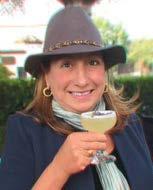
EDITOR-AT-LARGE Sarah Wood FOUNDERS Sarah Wood and Rob Fisher
COPY EDITOR Doresa Banning
LAYOUT & DESIGN Matthew Freeman and Tina Bossy-Freeman
EDITORIAL ASSISTANT AND EVENTS MANAGER Rosie Parker
AD DESIGNERS Bigfish Smallpond Design
• Jane Bolling Design • Zephyr Pfotenhauer
• Melissa Thoeny Designs
CONTRIBUTORS
Crystal Birns • Jordan Champagne • John Cox
• Rob Fisher • Margaux Gibbons • Roseann
Hernandez Cattani • David Hills • Michelle
Magdalena • Kathryn McKenzie• Ron Mendoza • Laura Ness • Rosie Parker • Zephyr Pfotenhauer • David Royal • Patrick Tregenza
• Jessica Tunis • Amber Turpin • Sarah Wood
ADVERTISING SALES ads@ediblemontereybay.com • 831.600.8281

Shelby Lambert shelby@ediblemontereybay.com Kate Robbins kate@ediblemontereybay.com Aga Simpson aga@ediblemontereybay.com
DISTRIBUTION MANAGER Mick Freeman • 831.419.2975
CONTACT US:

Edible Monterey Bay P.O. Box 487 Santa Cruz, CA 95061 www.ediblemontereybay.com 831.600.8281 info@ediblemontereybay.com
Edible Monterey Bay is published quarterly. All rights reserved. No part of this publication may be used without written permission of the publisher. Subscriptions are $28 per year at www.ediblemontereybay.com. Every effort is made to avoid errors, misspellings and omissions. If, however, an error comes to your attention, please accept our apologies and notify us. We also welcome letters to the above address. Thank you.
4 edible MONTEREY BAY WINTER 2018

EDIBLE NOTABLES HOT CHOCOLATE

Sweet times for award-winning Mutari Chocolate in Santa Cruz
BY LAURA NESS PHOTOGRAPHY BY PATRICK TREGENZA
6 edible MONTEREY BAY WINTER 2018
Heavenly is the first word that pops into my head as the elemental essence of chocolate wafts from the Mutari factory and shop on Front Street in Santa Cruz. Inside, piles of cacao beans in burlap sacks imprinted with their country of origin line the floor, while empty sacks adorn the walls.
This isn’t just a chocolate shop; it’s a window on the world of cacao.
Owners Katy Oursler and Stephen Beaumier took over Mutari three years ago. Gourmands to the core, the couple stone grinds ethically sourced, single-origin cacao beans to create their drinking chocolate and confections under the Mutari and White Label brands.


“We are one of only about 150 bean-to-bar makers in the U.S.,” says Beaumier, a chef with a pedigree from Michelin-star restaurants Cyrus and Quince. Chocolate connoisseurs often visit Santa Cruz to seek Mutari out.

Explains Oursler, “Cacao grows in the rainforest belt around the equator. We travel around the world meeting farmers. Each farm has its own terroir, which you can taste in the beans.” The owners currently source from 11 different farms and typically pay four times fair trade for beans.
Oursler, who hails from Ithaca, N.Y., helped found Outstanding in the Field with Jim Denevan and specializes in farm-to-table events. Beaumier, a New Hampshire native, considers cacao one of the most challenging ingredients he’s ever worked with due to the combination of science and artistry needed to produce high-quality products.
Both live just four blocks from the shop, where Beaumier spends many an hour dialing in the ideal roasting time and temperature for each type of bean. A friend fashioned a drum basket for the eBaysourced Henny Penny rotisserie oven that was actually built for roasting chickens. Beaumier and Oursler paid $1,200 for it. A typical cacao roaster would have cost them $50,000.
When I break open a fresh-roasted Honduran bean, it imparts the aroma of chocolate-dusted pecans, and tastes much the same. Its crunch and flavor have me hooked. Oursler reminds me that cacao contains theobromine, a stimulant and antioxidant far more subtle than caffeine. A vasodilator, it can help lower blood pressure. Yep, chocolate really is good for you.
www.ediblemontereybay.com 7
Mutari owners Katy Oursler and Stephen Beaumier firmly believe chocolate makes you happy





8 edible MONTEREY BAY WINTER 2018
Cacao is sourced from 11 tropical farms and roasted in a repurposed chicken rotisserie
Oursler walks me through the cacao to cocoa process. After harvesting and cutting open the cacao pods, which contain between 30 and 50 beans attached to a placenta, farmers ferment the beans in wooden boxes with the white guava-tasting pith that coats the beans. After fermentation, the beans are dried, preferably slowly, to reduce acid.
Upon receiving the sacks of beans, Oursler and Beaumier handsort them before roasting. Beans are then cooled, cracked, winnowed to remove husks, ground into nibs and refined in liquid form. They are then blocked and aged for a month, before being conched and tempered in large melanger vats with paddles that revolve slowly for three to five days. Tempering ensures a sharp snap, a glossy appearance and an even, creamy melt. It’s time consuming and labor intensive.
Mutari produces about 100 pounds of 70% chocolate per week, from 100 pounds of beans. About 30% of the chocolate is lost in processing, with organic sugar and a touch of residual molasses making up the difference. Husks are used for fertilizer and to make cacao tea.
To preserve the terroir of each batch of single origin cacao, the two don’t add any dairy. “We only use Native Organics full-cream coconut milk in our hot chocolates,” explains Oursler.
So, how does it taste? Earthy, rich, multi-layered and contemplative—Mutari chocolates engage your every sense.
Choose from Himalayan pink salt, spicy Mexican and straight up hot chocolate, all flavors swirling in mixing machines on the counter. Served in ceramic mugs handcrafted by Jonas Davidson of Permanent Vaclaytion, the hot beverage approaches a ceremonial experience.
Even richer is Mutari’s sipping chocolate, with a whipping cream texture that defies quick drinking and is more like liquid pot de crème.
Oursler says the frozen dark chocolate, made with 77% Costa Esmeraldas Ecuador Ganache, topped with housemade organic whipped cream and chocolate syrup, is a fan fave. No wonder people come from far, far away for these decadent treats.
Mutari offers a selection of truffles, chocolate bars and baked goods, all made in house. The brownies are life
changing. Snag a bar of Wild Bolivia (blueberry and blood orange), which won a silver medal out of more than 1,000 entries, at the 2018 International Chocolate Awards. The business won bronze for its Honduras La Masica (explosive raspberry and roasted hazelnut) in 2017.

If you really want to geek out on cacao terroir, partake in Mutari’s drinking flight, $15. Much like wine, you might enjoy Costa Esmeralda from Ecuador because you like cabernet for its tobacco, earth and pepper, while others might prefer Anamalai from India for its high acid and olive notes, more like cool climate syrah.
And, it’s all alcohol free.
Tours and tastings are available by appointment for eight or more guests for $20. Oursler says she and Beaumier plan to offer chocolate fondue parties, as well as special gift sets, during the holiday season. Oh, and they make their own marshmallows, too.
Laura Ness is a longtime wine journalist, columnist and judge who contributes regularly to Edible Monterey Bay, Spirited, WineOh.TV, Los Gatos Magazine and Wine Industry Network. Her passion is telling stories about the intriguing characters who inhabit the fascinating world of wine and food.
Mutari Chocolate
Factory and Shop: 504 Front St., Ste. A, Santa Cruz, open W–Su Pop-up Chocolate House: 1108 Pacific Ave., Santa Cruz, open F–Su www.mutarichocolate.com
www.ediblemontereybay.com 9
Earthy, rich, multi-layered and contemplative—Mutari chocolates engage your every sense.
EDIBLE NOTABLES EL NOPAL
Hollister’s best little Mexican-style bakery is a long family tradition
 BY ROSEANN HERNANDEZ CATTANI PHOTOGRAPHY BY MICHELLE MAGDALENA
BY ROSEANN HERNANDEZ CATTANI PHOTOGRAPHY BY MICHELLE MAGDALENA
10 edible MONTEREY BAY WINTER 2018

www.ediblemontereybay.com 11
Some people find their dream job after spending years at school or completing a fancy summer internship in one of the major cities, while others, like fourth-generation baker, Francisco “Frankie” Berlanga, are born into their vocation.
“My grandfather’s dad and all his brothers had bakeries in Mexico,” says Berlanga one busy Saturday morning at El Nopal Panaderia and Tortilla Factory on 3rd Street in Hollister. Berlanga, 34, operates both the flagship location and a second El Nopal bakery on 4th Street in San Benito County’s largest town.
Standing in front of a rotating commercial oven where a number of mini French loaves, known as bolillos, are baking and slowly turning a light golden color, Berlanga tells how a little pig helped shape the story of his family’s baking roots in the United States.

When Berlanga’s grandfather, also named Francisco, was a teenager, he worked at his father’s bakery in Nuevo Laredo, a town in Mexico located on the banks of the Rio Grande. There, as a young man he learned the family trade and more importantly, his father’s recipe for puerquitos, a soft gingerbread cookie that comes in the shape of a pig.

Mexican pan dulce (or sweet breads) are named after their shape. There are elote (corn), cuernos (horns) and conchas (shells)—a fluffy, slightly sweet yeast bread with a sugary topping in either pink, yellow, white or brown. All are perfect for dunking in coffee or champurrado, thick cinnamon-accented hot chocolate commonly served during the winter holidays, but it is puerquitos (pigs) that have the most distinct flavor, a mild ginger, not as spicy as a ginger snap.

When Berlanga’s grandfather moved to Laredo, Tex., his father’s gingerbread recipe helped him land his first job at a local bakery.
From that first job, the elder Francisco took his trade from Texas to California, working in bakeries in San Jose and Salinas and finally Pajaro—a working-class neighborhood in North Monterey County—where he opened his first bakery, El Nopal, in 1967. Nearby canneries and food processing plants, which at the time operated 24 hours a day, supplied a steady stream of customers, quickly garnering it a reputation for making the best pan dulce around.
Today, that location is run by Berlanga’s
uncle. In Hollister, Frankie runs the bakery opened by his father Adolfo, a Vietnam veteran, who was scouting for a new location when he saw a for rent sign at a shuttered dry cleaners in Hollister.
The space came with a little house in the back alley where the young family would live. “It was great,” says Frankie, who has two older sisters, one of whom sells bakery products. One day the owner of the building asked his dad if he wanted to buy the property and he said yes. They did the deal with a handshake.
Berlanga says he may well be the last of his family to continue in the baking business. The long hours can be tough, he says, and he credits his ability to sleep on command and his wife, Cherub, for support, “I think I’m the last one— the last generation. It’s good work, but it’s every day.”
On a typical day, Berlanga arrives at the bakery at 8:30pm to get things ready. Then he returns home, takes a nap and wakes up at 1:00am to get back to the bakery to start baking for the day.
12 edible MONTEREY BAY WINTER 2018
Every day the bread and pastries are made freshly, because like his dad Berlanga uses no preservatives in his dough. If there are leftovers, the discounted day-old bread is gone by the following morning. “Some people prefer the day-old bread,” says Berlanga, who himself starts off his morning with six pieces of the fragrant pan. “They say it is better to dunk in their coffee.”
The bakery also produces flour and corn tortillas, corn chips for area restaurants and, during the holiday season, rosca de reyes, a ring-shaped pastry that is typically eaten to celebrate Epiphany in January, and dough (or masa) for tamales, a holiday staple filled with either savory meat or cheese or made sweet with sugar and ingredients like raisins and pineapple for Christmas and New Year’s family get-togethers.
Like in Mexico where people visit the neighborhood tortilleria and panaderia daily for their fresh tortillas and bread, El Nopal is a regular stop for many of Berlanga’s customers, some of whom have known him since he was a kid helping his dad in the bakery.

“We have customers whose grown children now come into the store,” he says. One of his longstanding customers regularly ships packets of El Nopal tortillas to her daughter who lives across the country.
“I think she pays more for the postage than she does for the tortillas!” he says with a laugh.
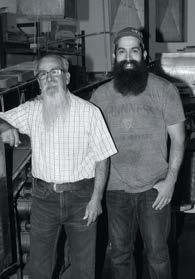
Roseann Hernandez Cattani is a writer, editor and explorer, searching the globe and the Monterey Bay area for new tastes and treasures.
El Nopal Panadería and Tortilla Factory
216 3rd St., Hollister

Second location: 1290 4th St., Hollister
Highlighting brands that are committed to making a difference environmentally, ethically, and socially.
www.ediblemontereybay.com 13 Santa Cruz
Pacific Ave Capitola
Bay Ave
• (831) 423-3349 • 1224
• (831) 476-6109 • 504C
Berlanga says he may well be the last of his family to continue in the baking business.
EDIBLE NOTABLES OLIVE OBSESSION
Olive oil is putting tiny San Ardo on the map, with a fifth-generation family ranch now a modern day agricultural success
 BY KATHRYN MCKENZIE PHOTOGRAPHY BY BY DAVID ROYAL
BY KATHRYN MCKENZIE PHOTOGRAPHY BY BY DAVID ROYAL
14 edible
BAY
2018
Greg and Cindy Traynor of 43 Ranch
MONTEREY
WINTER
Just as with wine, there’s a technique to tasting olive oil. First, warm the tasting cup in your hands for a minute or two then swirl it, the better to release the aromas. Take a good sniff, and then a slurp.

That’s right. A slurp, which spreads the oil throughout your mouth and ideally deposits a bit on the back of the tongue, allows the taster to pick up on flavor notes that can range from hints of green tomato and black pepper to cinnamon and tropical fruits.
“Those flavors don’t get captured in grocery store olive oil,” says Greg Traynor, who is demonstrating the proper method at his 43 Ranch tasting room in South Monterey County. Every one of the three extra virgin olive oils (EVOOs) that the Traynors make has its own unique profile, from Picual’s leafy and grassy notes to the complex nutty/buttery elements of Helen’s Blend.
Traynor and his wife Cindy are on a quest to make outstanding extra virgin olive oil on their ranch in the tiny community of San Ardo, halfway between the salad bowl of Salinas and the vineyards of Paso Robles. In just a few short years, they’ve been remarkably successful, capturing major awards and winning attention from all over the world.
Their premium small-batch olive oils have won more awards this year than any producer in the state, including a Best of Show award for their Helen’s Blend at the 2018 Los Angeles International Extra Virgin Olive Oil Competition.
Not only that, they’re pressing oil for other ranchers,

providing a valuable service for olive growers from Santa Cruz to Arroyo Grande.
Greg says he became fascinated with making olive oil 12 years ago after reading about the mass testing of oils done by UC Davis, which discovered most olive oils labeled as extra virgin…were not.
He also realized that the family ranch, which had been devoted in years past to cattle and barley production, might be the perfect environment for growing olives.

“My grandparents’ house always had olive trees around it and they grew really well,” he says. “I started investigating.”
He retired from a corporate career at Nike and headed to the family ranch with Cindy, who continues to work as a flight attendant in addition to her chores on the ranch.
As the fifth generation to farm the ranch, the two have made some profound changes. In 2012, they planted four varieties of olives: Picual, from Spain; Leccino and Pendolino, from Italy; and Lucca, a California hybrid—4,800 trees in all. They harvested the first crop three years later. Then, they tore down the family gas station next to Highway 101, which had been shut since the 1980s.
www.ediblemontereybay.com 15
Their premium small-batch olive oils have won more awards this year than any producer in the state.
In its place the Traynors built a tasting room and olive mill, which opened last fall. It’s an undertaking that only the truly olive oil obsessed would want to pursue, but they’re just that: completely committed to making a premium product.

The mill and tasting room have a vintage industrial vibe, but their bones are completely modern, with the mill’s machinery and tubes inside and out, and two electric vehicle charging stations out front.
A display inside the tasting room shows family photos dating back to the early 1900s, and if you ask the question, “Where does the name 43 Ranch come from?” you’ll get quite a history lesson.
“Forty-three was my great-great-uncle’s land lottery number,” says Greg, whose maternal ancestor was a soldier in Napoleon III’s army, which invaded Mexico in the early 1860s.
How that soldier made his way to this part of California is anyone’s guess, but the result was a 60-acre parcel that has been passed down through five generations of the Goutx/Aurignac/Traynor family.
It is an ideal place to grow olives, with flinty soil and warm, dry weather most of the year. But like everyone else who farms, the Traynors deal with the whims of nature. Last year, they had a bumper crop. This year, not so much, due to a hot spell in February followed by a freeze in March, a combination that is plaguing olive producers up and down the state this year. But Greg, who is on the board of the California Olive Oil Council, says that there will still be olives to mill, since farmers near the coast have been less affected.
Greg and Cindy immersed themselves in olive oil culture by taking trips to Italy, where Greg learned to mill from old-timers there and investigated milling equipment, finally settling on Pieralisi, an Italian brand.
He also discovered that Americans don’t typically get the best olive oil from overseas: “The really good stuff doesn’t get imported much,” he says.
The Traynors pride themselves on their ability to produce olio nuovo, or freshly pressed olive oil, a rare delight that not many get to experience. The less-filtered product contains tiny pieces of olive, which makes it
delicious but also more perishable, unlike EVOO, which keeps up to 18 months if properly stored.
“If I could sell olio nuovo all year long, I would. It’s the best,” says Greg, who can be found selling his oil at the Tuesday Carmel farmers’ market in season.
From the end of October until the beginning of December, the Traynors’ mill will run full bore—processing up to 2 tons an hour—as truckloads of ripe olives arrive from around the Central Coast. Greg says his first priority is milling as soon as possible after loads arrive “because fresher is better.” Olives that sit around for a long time start to break down and ferment, which makes for not-so-tasty oil.
Olives are loaded into a hopper for debris removal and cleaning then milled into a thick paste that moves through several other steps for oil separation and filtration. For extra virgin olive oil, additional filtration makes it 99.9% pure and a more stable product.
California has the strictest guidelines in the world when it comes to EVOO certification, adopted in 2014. Both a chemical test and a taste test are required, and oils with unwanted flavors, like mustiness or woodiness, can’t be labeled EVOO.
Part of the Traynors’ mission is to educate the public about what good olive oil should taste like. And the couple is getting another generation of its family on board.
“Our 2-year-old granddaughter slurps olive oil like a professional,” says Greg with pride.
Kathryn McKenzie, who grew up in Santa Cruz and now lives on a Christmas tree farm in North Monterey County, writes about sustainable living, home design and health for numerous publications and websites.
43 Ranch 65340 Los Lobos Road, San Ardo 831.627.2455 • www.43ranch.com
16 edible MONTEREY BAY WINTER 2018
Friends and family love helping with the olive harvest at 43 Ranch
Photo courtesy Greg Traynor
Perfect Food, Every Time
This year, make a roast that deserves a toast. Joule Sous Vide is the hands-free cooking tool that makes any meal easy and delicious. And while Joule does the work, you get time back for yourself. Whether it’s a weeknight dinner or a holiday spectacular, you can make perfect food, every time with Joule. Get cooking at ChefSteps.com Drop it in the water for a perfect cook Crisp it up for a perfect nish Season and
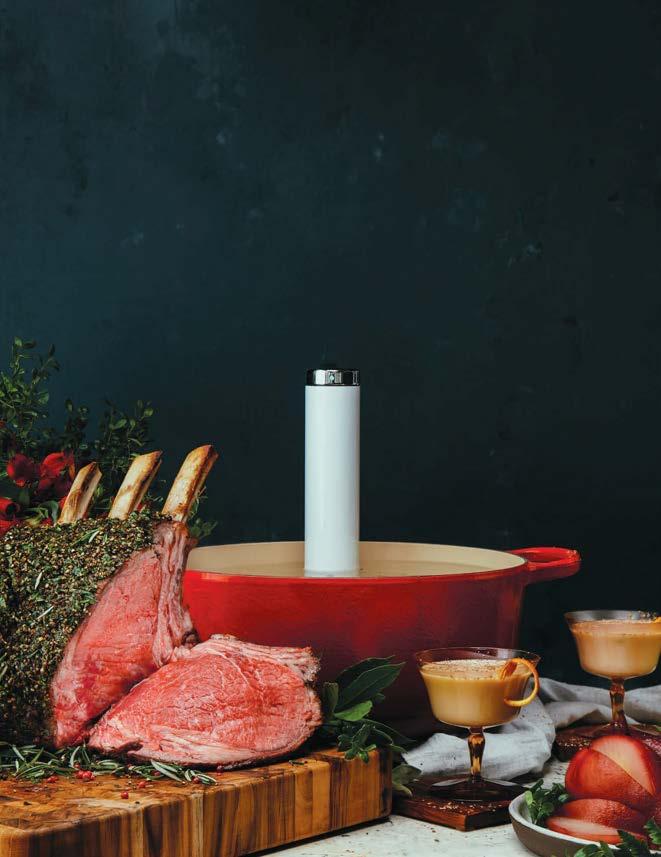
™
bag your food
WHAT'S IN SEASON

dungeness crab dungeness crab dungeness crab

Master of the winter table and essential catch for the local fleet
BY ROSIE PARKER PHOTOGRAPHY BY DAVID HILLS AND CRYSTAL BIRNS
As a transplant from New England, my first true foray into Dungeness crab culture happened just last year when my friends celebrated the start of the season with a mid-November crab boil. We drank Champagne and ate crab cakes and Caesar salad while huddled around a giant bowl full of crab legs waiting to be cracked, peeled and devoured. The scene was festive and the fresh crab was delectable—tender meat that was rich and buttery in flavor while maintaining a clean, saline taste. Still, I felt mostly like an outsider, a curmudgeon from the Northeast muttering something about lobsters under my breath. The crowd briefly entertained the idea that there was fair competition amongst the crustaceans, but then firmly deemed Dungeness crab as superior to the rest.
What I learned that night, and have continued to hear through countless conversations for this article, is that when it comes to Cancer magister—quite literally “master crab” in Latin—it’s a personal matter. For most, Dungeness crab evokes holiday traditions with friends and family and a surge of pride for the wonders that live in these icy Pacific waters. Even an outsider (who still waves her lobster flag high) can admire that.

18 edible MONTEREY BAY WINTER 2018

www.ediblemontereybay.com 19




20 edible MONTEREY BAY WINTER 2018
CALIFORNIA NATIVE




Dungeness crab was first marketed in California in the 1860s, but the earliest development of the fishery took place in the San Francisco Bay around the time of The Gold Rush. The fishery quickly blossomed and by the turn of the century protective legislation started coming into place that would allow for continued growth. Demand for Dungeness crab soared after WWII when the fishery expanded from the S.F. Bay to the entire coast of Northern California. According to the state’s Department of Fish & Wildlife, the annual statewide production before the 1945-1946 season averaged 2.6 million pounds; post-WWII season averages were four times that.
The Monterey Bay is near the southern end of the fishery and is smaller than our northern neighbors, but crab is still a vital catch for the Central Coast fishing community. “It’s been a staple of the Monterey Bay from the 1870s to the present day,” says Geoffrey Dunn, local writer, historian and fourth-generation Santa Cruz native. “When Italian fishermen first arrived, they actually viewed crabs as a ‘waste product’ and left the catch on the beaches.”








By the post-WWII crab boom, however, Dungeness crab had solidified into one of the most profitable species in the Monterey Bay. “For small boat fishermen, Dungeness crab is one of the most important catches in terms of revenue,” explains Calder Deyerle, Moss Landing native from the multi-generational fishing family that owns and operates the Sea Harvest in Monterey. “It’s a smaller community in the Monterey Bay which can lead to some competition, but we’re all friends and the fishery is really well managed so even if it’s a slower season we can all usually make a profit.”




The Dungeness crab season generally opens mid-November (early November for recreational fishing) and runs until July with the catch significantly slowing down by late winter. It complements the other profitable seasons of king salmon and squid and also allows fishermen to still fish other year-round species. I spoke with Deyerle a few weeks before the commercial season opened and he was upbeat. “I’m just so happy we’re going to open on time,” he says. “That’s such an important factor for me and a really good thing for the starting market price.” In contrast, the past couple of seasons were shortened due to weather or toxic levels of domoic acid, which makes the crabs unsafe to consume.
This year Deyerle had his alarm set for 6am on Nov. 14, exactly 18 hours before the season officially was to open. That’s when he and other local fishermen get the green light to set their traps. When I spoke to him in late October, Deyerle said he planned to set 250 traps that would be pulled throughout the season. “It’s such a treat to be able to provide something as treasured as high quality Dungeness crab for the Monterey Bay community.”



HOLIDAY TRADITION











For coastal Californians, Dungeness crab is the belle of the ball throughout the holiday season and, for many, a steadfast Thanksgiving, Christmas and New Year’s tradition. Hans Haveman of H&H Fresh Fish in Santa Cruz told me that last year he sold 1,000 pounds of crab on New Year’s Eve alone, while Stagnaro Bros. sells about 6,000–10,000 pounds in the days leading up to Christmas. “Seafood during the holidays is a big deal,” says Haveman. “It’s so fun being an outlet for it.”

www.ediblemontereybay.com 21
VISIT OUR STORE CONVENIENTLY LOCATED AT e Monterey Plaza Hotel 400 Cannery Row, Suite C Monterey, CA 93940 831-375-NUTS (6887) For more information and to see our entire list of products, visit our website www.stewartandjasper.com California Almonds e Perfect Gift for Holiday Time, or Anytime! Pantone 374 C Pantone 469 C Pantone 343 C Stewart & Jasper Co., Retail Logo Prepared 06.30.06
Italian
“When
fishermen
first
arrived,
they actually viewed crabs as a ‘waste product’ and left the catch on the beaches.”
Honestly, it’s been fun just hearing all the different Dungeness crab traditions— from the Christmas Eve classics of cioppino or Feast of the Seven Fishes to the more unique approaches like my friends who like to pair their crab with Caesar salad, tacos and martinis. There are families that prefer to do all the cracking and cleaning before they sit down to eat, and others that find delight in the festive messiness of it all.
For many, selecting and purchasing their fresh crab is an integral part of the experience. EMB staff member Kate Robbins described the first time she bought live crabs from the Stagnaro Bros. winter warehouse on Washington Street in Santa Cruz as “truly magical—like walking into a more provincial time and place. It’s an intimate scene where you feel close to the fisherman, the crab, the whole reality of the process.”
When choosing your crab, you want it to
be heavy and lively (if, of course, you’re purchasing live). Crabs can sometimes be skinny inside their shell, so weight matters more than size. If purchasing a whole cooked crab, make sure the legs are curled up underneath the body—a sign that the crab was cooked happy and alive. Buying fresh, live crabs is always preferable.
Besides Stagnaro Bros. and H&H Fresh Fish, local community-supported fisheries like Ocean2Table or Real Good Fish are a great place to source this season’s crab. There’s also Fish Lady in Soquel, Monterey Fish Co. and three outlets of Sea Harvest in Monterey County, as well as many other markets that source from local fishermen all season long.
Rosie Parker, a native New Englander, likes to complain of missing home while living the Santa Cruz high life—surfing, hiking, writing and working for a delicious craft brewery.
TOM McNARY
Lifelong Dungeness crab lover

Chef Tom McNary grew up in San Francisco where he enjoyed cracking crabs with his family on Fisherman’s Wharf. He favors the combination of crab and artichokes—soft textures and strong flavors that are both a delight in an unadulterated form as well as a perfect vehicle for all your dipping sauces.
A champion of fresh, local, seasonal food, McNary began his cooking career in the mid-’80s in the kitchen of the famed Chez Panisse.
In 1989, he brought his food philosophy to Aptos where he opened Carried Away—a café and catering business that has been a staple in the community for almost 30 years. This past summer, he entered a new phase of his career by joining Soif Restaurant & Wine Bar in Santa Cruz as executive chef.
The recipes he is sharing this winter in EMB are innovative, yet balanced and delicate. The crab, he believes, should never get lost in the dish. “It doesn’t matter what the occasion is,” he says. “When there’s crab, it’s special.”

22 edible MONTEREY BAY WINTER 2018
For coastal Californians, Dungeness crab is the belle of the ball throughout the holiday season.
Photo by RR Jones


www.ediblemontereybay.com 23
Photo by Crystal Birns
DUNGENESS CRAB LASAGNA WITH GREENS AND MUSHROOMS
Courtesy Tom McNary, chef, Soif in Santa Cruz
2 ounces shallots, diced 10 ounces mushrooms (I like porcini and chanterelle) 3 cups cream, reduced to 1½ cups 1½ cups tomato sauce, reduced to ¾ cup, or ⅓–½ cup sundried tomato purée
1 pound mixed greens, like kale and chard 1 clove garlic, chopped ¼ cup red onion, thinly sliced
1½ pounds Dungeness crabmeat, picked 2 tablespoons mixed herbs, such as parsley, tarragon and chives, chopped 1 pound fresh pasta sheets, blanched 4 tablespoons Parmesan cheese, grated Salt and pepper
In a large pan over medium heat, wilt the greens with the red onion and chopped garlic. Strain to remove excess liquid and lightly chop.
Heat cream over medium-high heat and reduce to a simmer until 1½ cups remain.
If using tomato sauce, heat over medium-high heat and reduce to a simmer until ¾ cup remains.
Sauté mushrooms with shallots in butter or olive oil for 5–8 minutes or until most of the mushroom liquid has evaporated.
Mix reduced cream and tomato sauce (or sundried tomatoes) together. Season with salt and pepper.
Separately, mix crabmeat with chopped herbs.
To assemble, put 1 tablespoon of sauce in the bottom of a 9-by13-inch baking dish. Put a layer of pasta in dish then ¼ of the tomato sauce followed by the mushrooms, then another layer of pasta, ¼ of the sauce, then the greens and another layer of pasta, ¼ of the sauce, the crab and one more layer of pasta. Top with remaining sauce and grated Parmesan.
Bake covered in a 350° oven for 25–30 minutes and then bake for 15 more minutes uncovered. Serves 6–8.
ENDIVE SALAD WITH SHAVED FENNEL, PERSIMMONS AND DUNGENESS CRAB
Courtesy Tom McNary, chef, Soif in Santa Cruz

2½ tablespoons shallots, chopped 2 tablespoons tarragon, chopped 2 tablespoons lemon juice 2 tablespoons white balsamic vinegar or apple cider vinegar 2 tablespoons crème fraîche ½ cup pure olive oil (not extra virgin olive oil) 1 head (about 3 ounces) frisée 1 head (about 3 ounces) radicchio 1 bulb (about 4 ounces) fennel, shaved ½ pound Dungeness crabmeat, picked 2 Fuyu persimmons (about 6 ounces), peeled and cut into wedges
Combine chopped shallots, tarragon, lemon juice, vinegar, crème fraîche and olive oil and whisk lightly. If dressing separates, don’t worry—just mix again right before dressing salad.
Mix fennel, frisée, persimmons and radicchio in a bowl. Lightly dress with ¾ of the dressing. Divide into four plates and mound crab on top of salad. Drizzle remaining dressing over crab.
Garnish with additional tarragon sprigs, thinly sliced scallions or pomegranate seeds. Serves 4.

24 edible MONTEREY BAY WINTER 2018
Photo by Crystal Birns



































www.ediblemontereybay.com 25

FRUITS Apples • Asian Pears • Avocados • Grapefruits • Grapes • Guavas • Kiwis • Kumquats • Lemons • Limes • Mandarins • Oranges • Parsnips • Pears • Persimmons • Pomegranates* • Pomelos Vegetables Artichokes* • Arugula • Asparagus** • Beets • Bok Choy • Broccoli • Broccoli Raab • Brussels Sprouts • Burdock • Cabbage • Cardoons • Carrots • Cauli ower • Celeriac • Celery • Chard • Chicory • Collards • Cress • Dandelion • Endive • Fava Greens • Fennel • Garlic • Horseradish • Kale • Kohlrabi • Leeks • Mushrooms • Mustard Greens • Nettles • Onions • Orach • Parsnips • Potatoes • Radishes • Rutabagas • Salsify* • Shallots • Spinach • Sprouts • Winter Squash • Sunchokes • Sweet Potatoes • Turnips Seafood Abalone • Anchovies • Cabezon • Dungeness Crab • Rock Crab • Starry Flounder • Paci c Grenadier • Herring • Lingcod • Rock Cod, aka Rock sh • Sable sh, aka Black Cod • Paci c Sanddabs • Dover Sole • Petrale Sole • Rex Sole • Spot Prawns * December only ** February only All sh listed are rated “Best Choice” or “Good Alternative” by the Monterey Bay Aquarium’s Seafood Watch program. LOCAL FOODS IN SEASON DECEMBER, JANUARY AND FEBRUARY 26 edible MONTEREY BAY WINTER 2018
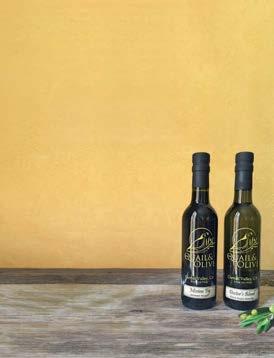

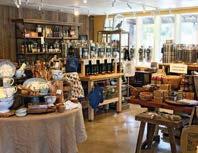


www.ediblemontereybay.com 27 A True California Olive Oil Experience 14 Del Fino Place Carmel Valley Village • Taste California’s Premium Extra Virgin Olive Oils & Specialty Vinegars • Shop our pantry full of locally made goods • Schedule your private tasting seminar 831 659 4288 QuailandOlive.com Felton 6240 Highway 9 Boulder Creek 13159 Highway 9 Locally Owned Since 1991 •First Certified Organic Retailer in the U.S.A. Since 2000 � Only Independent Certified Organic Retailer in Santa Cruz wildrootsmarket.com R e s i l i en c e i s Fer t il e Register now >> ECO-FARM.ORG EcoFarm is more than a conference. It’s a gathering for inspiration, renewal, and celebration. RegisterbyDec9andSAVE withdiscountcode: earlyreg JANUARY 23–26, 2019 Asilomar Conference Grounds Pacific Grove, CA




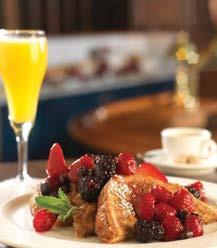
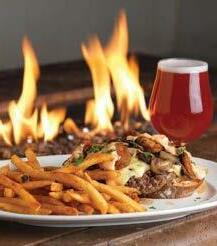
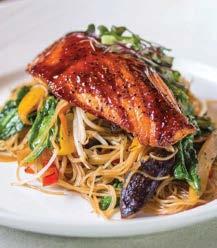
28 edible MONTEREY BAY WINTER 2018 CALIFORNIA CULTURAL CUISINE locally sourced ingredients handcrafted cocktails & award winning wine list sunday brunch with live music & cocktails prepared tableside (831) 649-7830 | JACKSATPORTOLA.COM (831) 649-2698 | PORTOLAHOTEL.COM LUNCH 11:30AM - 4:00PM | DINNER 4:00PM - 11:00PM SUNDAY BRUNCH 11:30AM - 3:00PM MONTEREY'S ORIGINAL CRAFT BREWERY Award Winning House Brews & Seasonal Ales Brewed On-site | Pet-Friendly Patio | Sports on 18 HDTV’s (831) 649-2699 | PETERBSBREWPUB.COM HAPPY HOUR DAILY 4:00PM-6:30PM LATE NIGHT HAPPY HOUR [SUN-THUR] 9:30PM-10:30PM OPEN DAILY 6:00AM - 11:00AM Made-to-Order Omelets European Breakfast Buffet | Bottomless Mimosas Outdoor Pet-Friendly Dining Available BREAKFAST AND MIMOSAS

































































































































www.ediblemontereybay.com 29
















































































































30 edible MONTEREY BAY WINTER 2018
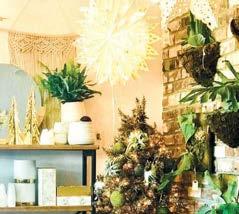






www.ediblemontereybay.com 31 MODERN GARDEN & LIFESTYLE GIFTS FESTIVE HOLIDAY TRIMMINGS • Parent-Child Classes • A Walk Through the Grades • A Morning in Early Childhood JOIN US for one of these events to learn more about the Santa Cruz Waldorf School: www.santacruzwaldorf.org | (831) 824-2161 Nourish the whole child by cultivating the individual’s capacity of head, heart, and hands. Design • Installation • Maintenance Ecological Landscaping Need help with edible landscaping? Call us @ 831.425.3514 www.terranovalandscaping.com ecological landscapi ng License #656636

32 edible MONTEREY BAY WINTER 2018
BACK OF THE HOUSE
Global 0rganic
Sustainably sourced international cuisine is more diverse and plentiful than ever before in the Monterey Bay area
BY SARAH WOOD PHOTOGRAPHY BY MICHELLE MAGDALENA
Ramin Movahedi didn’t learn the recipes that are neatly taped to the kitchen wall of his Monterey restaurant in culinary school, and he didn’t develop them at other restaurants. In fact, Movahedi—who moved to Carmel at age 20, after the 1978 Iranian Revolution and ensuing war tore apart his country—is a software engineer who had no restaurant experience at all before opening his Persian-influenced, vegetarian and organic Saffron Café last year. Instead, starting when they were engaged 26 years ago, he and his wife, Jill, collected the recipes from extended family members and practiced and refined them over the years as they prepared from-scratch meals each night for themselves and their two daughters at their Carmel Valley home.
The aim was always to make their fresh, light dips and bright, spiceinfused stews as healthy and delicious as possible. But the idea of a restaurant came over time, as they struggled to find local restaurants that offered food that was as healthful as what they were cooking at home, and friends made sure they knew how delicious their cooking was: “Our guests started saying we really love your food! Make this for us! Make that for us!” Movahedi says, smiling with pride.
Fast forward to today, about two years after opening its doors, and Saffron has become something of a busy downtown extension of the Movahedis’ own kitchen.
“Everything is our own,” Movahedi says. “If I didn’t love it, it wouldn’t be on the menu. Most of what we have here is what we eat at home, and almost everything is organic. Almost everything is freshly made.”
Immigration has always provided much of the soul, vibrancy and brawn of the Monterey Bay food community, and organic, farm-totable-quality ingredients have long been staples of certain local restaurants that offer international cuisines—particularly ones that adopt a fine-dining model, like Ristorante Avanti and La Posta in Santa Cruz and La Balena in Carmel.
But now, as diners here and across the United States seek out more healthful and adventurous, yet casual and high-value food, the diversity
of nationalities and formats of local restaurants committing to sourcing organically is rising—and those who’ve been doing it all along are benefiting from their patience. If there is a common denominator among the proprietors, it’s a desire to nurture and entertain their guests as they would family in their own home.
LAND OF ORGANIC
One of the earliest of these local restaurants is the colorful, art-filled Haute Enchilada, founded 20 years ago by Kim Solano as a folk art café and espresso bar. Gradually, Solano—who grew up in Aptos but lived in her father’s birthplace, Mexico, for several years as an adult—began serving food, starting modestly with bagels. Today, she offers an exciting and sophisticated Latin fusion menu featuring the flavors of Peru, Spain and Cuba as well as Mexico.
Along the way, Solano has been a leader in running her Moss Landing-based business sustainably, becoming the first in the Monterey Peninsula area to get rid of plastic straws, and pioneering such natural practices as using owl boxes to keep away rodents.
With the environment and her and her customers’ health in mind, Solano has never sold anything but sustainable fish and makes a point of preparing everything she can with organic ingredients.
“It’s easy where we live—how can we not be [organic] when it’s so easy here?” Solano says. “Pesticides are killing us.”
The Monterey Bay area in fact has an abundance of organic farms and a much higher percentage of organic versus conventional crops under cultivation than the national average—the result of being at the vanguard of the organic movement since the founding of the UCSC Farm in the 1960s.
“One of the reasons we came here was the cornucopia,” says chef Diego Felix, referring to the plethora of local organic ingredients available to local chefs.
After working together at the organic and vegan fine-dining restaurant Millennium in San Francisco, and then their own restaurant, Casa
www.ediblemontereybay.com 33





34 edible MONTEREY BAY WINTER 2018
Clockwise from right: Spicy Dan’s Peanut Delight at Charlie Hong Kong; Denis Boaro at Gusto Handcrafted Pasta & Pizza; Ramin Movahedi (left) with operations manger Bijan Zahedi and assistant manager Roxanne Miller at Saffron Café, Ayoma Wilen at Pearl of the Ocean, and Kim Solano with her husband, Luis Solano, and father, Ray Retez, at Haute Enchilada
Photo by Angela Aurelio
Photo by Patrick Tregenza
Felix, in Felix’s home town of Buenos Aires, Argentina, he and his wife Sanra Ritten moved to Santa Cruz two years ago.
Originally trained in theater and imensely creative, Felix calls himself a “culinary troubador,” and aims to create a bridge between Argentina and the U.S. with his Colectivo Felix, an internationally acclaimed roving pop-up restaurant and catering company. And if all goes well, he hopes to open a brick-and-mortar restaurant in Santa Cruz in 2019.
HEALTH FIRST
But while local chefs like Solano and Felix find it easy to source organic—that is, foods that are certified according to USDA guidelines as being produced without most synthetic pesticides and fertilizers or genetically modified products, among other requirements—the decision to choose them takes commitment, usually to pay more, sometimes significantly. And obtaining certain organic ingredients requires some travel.
“To me personally and to my guests, it’s everything,” says Denis Boaro, when asked how important being organic is to his casual Seaside restaurant, Gusto Hancrafted Pasta & Pizza, which serves the cuisine of his native Italy. “It goes into our body—we are what we eat.”
Boaro picks up his organic berries himself from California Giant in Salinas or Santa Cruz each week, and imports the organic, stone-ground flours for his wood-fired pizzas from a small-production mill in Northwest Italy. His other restaurant, Carmel’s Basil Seasonal Dining, is certified sustainable by the Green Restaurant Association and Boaro expects Gusto to receive its own certification soon.
Concerns like Boaro’s about health were the No. 1 reason for sourcing organically given by restaurateurs interviewed for this story, and studies have borne this out: Organic milk, for example, has been found to offer higher amounts of omega-3 fatty acids than conventional, and organic fruits and vegetables have shown higher concentrations of disease-fighting antioxidants and lower amounts of harmful heavy metals and pesticides than conventional. Just this past October, the results of a new French study published in JAMA Internal Medicine tied frequent consumption of organic foods with a 25% reduction in cancers.
Charlie Hong Kong co-proprietor Carolyn Rudolph is quick to clarify that the Santa Cruz restaurant is not an expression of her and her husband Rudy’s heritage, and is more of a “health food restaurant that has chosen to use Asian flavors in our food” than an Asian restaurant, strictly speaking.
But just the same, over its 25-year history, Charlie Hong Kong has become a beloved and vital part of the Santa Cruz ethnic organic food scene.
The restaurant’s Asian street food-inspired menu is heavily vegetable-centric—Charlie Hong Kong goes through 3,864 bunches of Swiss chard alone per month—and as a result, Rudolph buys only organic, mostly from Lakeside Organic Gardens.
“You can’t wash the chemicals off a chard leaf,” she says. “The vegetables would be like little poison bombs.” (For the record, the Environmental Working Group, which rates foods for their pesicide residues, places chard neither on its Dirty Dozen nor its Clean 15, but somewhere between the two.)
Ayoma Wilen, the chef-owner of Pearl of the Ocean in Santa Cruz, sees serving healthful, organic food as not just a way to keep customers healthy, but also to boost their health.
“My intention is that people love this food and people heal from this
food,” Wilen says, and she trains her staff to follow the same purpose: “At every station I have a notice: ‘I prep with love; I cut with love; I serve with love.’”
As a young girl growing up in Sri Lanka, Wilen began visiting farmers’ markets with her father, a professor and son of an aryuvedic doctor. Her father always insisted on organic purchases, and with these ingredients, Wilen learned her mother’s cooking repertoire when she was just 14.
At the same age, Wilen started her first business, employing other children’s parents to make yoghurt for sale in her school cafeteria, and her ambition and acheivements are readily evident at her Water Street restaurant: An entire wall is covered in framed reviews and profiles, and on the menu, she offers private-label wines that she worked with acclaimed Livermore winemaker Pat Paulsen for four years to develop to pair optimally with the particular flavors of Sri Lankan food.
Using fruits and vegetables from the Saturday Cabrillo College and other farmers’ markets, fish from Stagnaro Bros. and natural meats, Wilen prepares meals that offer the six tastes of the aryuvedic diet that are intended to keep health in balance: bitter, sour, sweet, salty, pungent and astringent.
This focus on food as medicine makes it no wonder that Wilen has a strong following among cancer patients, but being healthful doesn’t get in the way of flavor—each dish is infused with its own complex mix of seasonings. The not-to-be-missed Cauliflower Cashew Curry, for instance, is flavored with a transporting combination of turmeric, cinnamon, coriander, garlic, fenugreek, green chiles and black mustard seed. (See recipe, p. 37.)
FOCUS ON FLAVOR
Taste is also a big impetus for going organic for many of the local international restaurants that commit to offering organic ingredients when they can.
Above the pass-through window at Pacific Grove’s Jeninni Kitchen + Wine Bar, which serves the Mediterranean cuisine of proprietor Thamin Saleh’s native Levant, a blackboard labeled “Friends and Family” lists the local organic Borba, Mariquita, Seredipity and Swank farms.
“For us in terms of the food itself, they do have a much better presence in our dishes because they have a better flavor in general,” Saleh says, referring to the fresh, local organic ingredients that the farms provide.
Saleh remembers the shock of biting into a tasteless tomato from a large grocery store chain when he moved to this area from an agricultural region on the West Bank in the mid-1980s. So to ensure a supply of flavorful, clean produce, his restaurant buys from three different local farmers’ markets.
Taste is of course highly subjective, and the results of research on the topic are mixed. Still, there is evidence to support the idea that organics taste better: The large quantities of antioxidants that help make organic produce so healthful also deliver a lot of flavor, and some research has suggested that the typically higher quanties of nitrogen used in conventional farming tend to boost sugars but dilute other flavors when the fertilizer causes produce to bulk up.
Better flavor is Lalita Kaewsawang’s top reason for purchasing organic, sustainable and local ingredients for her 1-year-old pop-up restaurant and catering business, Hanloh Thai Food.
www.ediblemontereybay.com 35
From left, Lalita Kaewsawang of Hanloh Thai Food, who hosts a regular Monday night popup at Sante Adairius in Santa Cruz and aims to eventually open her own restaurant; a Mediterranean panini from Saffron Café

“I was not raised to pay attention to those things,” she says, and she didn’t fully grasp their importance until after moving to the U.S. at age 13 and working in restaurants in Berkeley, New Orleans and Chicago. It took landing in Santa Cruz, she says, and apprenticing with David Kinch’s 3-Michelin-star Manresa for two years for her to really notice the difference. “It does taste better, and the quality is better if it’s grown here and is fresh.”
Kaewsawang gets her cabbages from Pinnacle and her carrots and lettuce from Route 1. She’s had some difficulty obtaining enough particulary Thai varieties of produce—holy basil, for instance, is delicate and dries out easily in the local climate—but recently she gave seed to three different friends to grow for her. Her makrut (also known as Kaffir) lime leaves, on the other hand, virtually fell into her lap—one day a local farmer called her out of the blue to say he was growing them on his small certified organic farm, and asked her if she wanted any.
But taste is not the only impetus for Kaewsawang to purchase organic—the environment is another important one for her and many of the other chefs and proprietors who spoke to Edible Monterey Bay for this article.
“I really want to be better about the environment. I think it takes a lifetime commitment,” Kaewsawang says.
“I think about my kids and my grandkids and my great grand kids and everybody,” says Movahedi, referring to pollution and climate change. “When we pick things for the restaurant, whether it’s a straw or or a spoon or whatever, what is an extra few pennies to make sure that they don’t stay around forever and destroy the world?”
Indeed, slow-to-decompose plastics have been found to injure and starve wildlife and contaminate the food chain, and chemicals used in conventional farming practices can poison farmworkers, water and ecosytems. Studies have also found that organic practices that build up soil health can also increase carbon-trapping qualities—thereby helping to stem global warming. This effect becomes even stronger when farmers use regenerative agricultural practices, such as reduced tilling.
MAKING IT WORK
But while the benefits of going organic are important to the restaurants that commit to it, the cost of doing so remains an issue.
Akindele Bankole, who opened his West African-influenced counter service restaurant, Veg on the Edge, last year in Santa Cruz’s Abbott Square Market, says he has to charge a bit more than local fast-casual eateries that don’t share his commitment to sourcing organically as much as possible, and that has been a challenge. “The investment has to start with the customer, but it has been a slow process,” says Bankole, who grew up in Nigeria.
Meantime, as Bankole works towards becoming 100% organic, he has found ways to cut other costs, such as replacing his disposable plates with reusable glass tableware. And while he’s very grateful to have his first location in the marketplace, he thinks opening a second, freestanding location with more of a fine-dining model will help: He believes the more upscale format will better allow him to cover the cost of his highquality ingredients, and will also drive business to his lower price point Abbott Square location.
For Kim Solano, time has made all the difference.
“Unfortunately, it’s expensive,” to source organically, Solano admits, and she says she probably doesn’t make as much money as she would if she didn’t. But staying true to her conviction that other people would want to eat healthful meals in a beautiful place as much as she does has paid off.
“I just know that if you put a good product out there and you persevere and wait out the many, many storms that you suffer, you will find some success,” Solano says.
“For me it’s taken 20 years of patience and waiting for people to get it,” she says, but she’s gratified to be feeling some success now at her bustling restaurant. “To me there is more to flavor than the way it tastes.”
Sarah Wood was the founding editor and publisher of Edible Monterey Bay and now serves as editor-at-large as well as working as a freelance writer and editor.

36 edible MONTEREY BAY WINTER 2018
CASHEW CAULIFLOWER CURRY
Courtesy Ayoma Wilen, chef-owner, Pearl of the Ocean in Santa Cruz
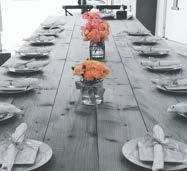
2 tablespoons organic olive oil or coconut oil 10–12 black mustard seeds
3 cloves garlic, peeled and finely chopped 1/8 of medium red onion, diced small ¼ teaspoon turmeric powder 12 fenugreek seeds

1-inch piece fresh cinnamon stick
½ teaspoon sea salt (preferably sourced from ancient salt deposits)

1 13½-ounce can coconut milk (may use ½ can coconut cream and ½ can water)
1 cauliflower with fresh green leaves attached
1 handful hydrated cashews (soak cashews in water overnight)
1 medium red tomato, diced small ¼ jalapeño pepper, finely chopped 8–10 fresh curry leaves, if available
½ teaspoon spice mixture, freshly ground
Spice Mixture
½ tablespoon cumin seeds

1 tablespoon coriander seeds Grind seeds into powder.
Wash cauliflower and chop cauliflower greens into medium-sized pieces. Cut cauliflower head into bite-sized florets. Set aside for use later in the preparation.
Heat oil in a saucepan. When oil gets hot and starts to sizzle, add mustard seeds and let them pop. Then add garlic, onion, fenugreek seeds, turmeric powder, salt and cinnamon stick. Cook ingredients for 2–3 minutes until onions are translucent.
Add coconut milk, followed by jalapeño pepper, tomato, spice mixture and curry leaves, if available. Bring coconut sauce to a simmer and cook for 1–2 minutes, then stir cauliflower florets and soaked cashews into mixture.
Cook cauliflower 8–10 minutes until it softens. Then spread chopped cauliflower greens over the top of the mixture. Remove pan from heat and let the steam gently cook the greens for 1 minute longer, then serve and enjoy. Serves 6.
www.ediblemontereybay.com 37
We host a monthly, seasonal family-style dinner for 20 at our communal table and are available for unique private events. AN EVENT BASED COMMERCIAL KITCHEN & DINING SPACE IN SANTA CRUZ BOOK YOUR NEXT EVENT WITH US anepicuriouslifestyle.com 831.588.7772









38 edible MONTEREY BAY WINTER 2018 Visit Our Tasting Studio at the Carmel Crossroads Rooted deep in the legendary Santa Lucia Highlands Small lots that embody the mountainous, maritime terroir
IN THE KITCHEN
Whether foraged, cultivated or homegrown, mushrooms are a passion for chef John Cox
 BY JOHN COX PHOTOGRAPHY BY PATRICK TREGENZA AND JOHN COX
BY JOHN COX PHOTOGRAPHY BY PATRICK TREGENZA AND JOHN COX
www.ediblemontereybay.com 39
Poorly prepared mushrooms are a gastronomic tragedy. I still have nightmares of flaccid gray slices weeping a wretched slime onto whatever was unfortunate enough to lie beneath them. As a child, I would carefully sequester these toxic shards into one corner of the plate in order to avoid contaminating the rest of the dish. I grew up believing that I hated all mushrooms.
My relationship with mushrooms changed the first time I tried a Big Sur chanterelle; it was a revelation. A scruffy-looking forager in muddy hiking boots brought a basket of giant golden chanterelles to the back door of the kitchen of the Post Ranch Inn. The chanterelles were still damp from the morning rain and smelled of redwoods and oak leaves. Chef Craig von Foerster picked out a couple of small specimens and cooked them in a smoking pan with clarified butter and sea salt. After a few moments the chanterelles took on a rich chestnut color with a crisp exterior that gave way to a rich center scented by the ethereal flavors of the forest. I realized how delicious properly prepared mushrooms could be, and I began a career-long quest to learn all I could about foraging, growing and cooking mushrooms.


40 edible MONTEREY BAY WINTER 2018
A mass of gray oyster mushrooms (top) and antler reishi mushrooms (below) from Far West Fungi. Opposite page, bags of yellow oyster mushrooms and young shiitake mushrooms.
Ten
Technically called Agaricus bisporus, button mushrooms were the first cultivated mushrooms and have been grown in France since the late 1600s. It’s hard to imagine, but these are the descendants of rare wild mushrooms harvested in the forests around Paris for the king. One day a group of workers near the catacombs in Paris noticed a few “champignons de Paris” popping out of a pile of hay and manure inside the stable, likely from spores blown in from the forest or brought in by the horses. It is said that Monsieur Chambry, a farmer for the king, created a system for bringing piles of manure into underground quarries in order to cultivate mushrooms year-round. By the 1880s, when concrete and other building technologies had allowed cultivation to expand beyond the catacombs, there were more than 300 documented champignonnières throughout the city.
While the Parisian mushrooms may have been A. bisporus, they would have been closer in color to the mushrooms we refer to as crimini or portabella than
the white-capped button mushrooms that are so popular in supermarkets today. The ivory-colored cultivated mushrooms we enjoy were discovered by chance in the mushroom beds of a Pennsylvania farmer in 1926. Over the last 90 years they have been selectively bred for their desirable pale color.
Agaricus mushrooms—which include button, crimini and portabella—make up over 97% of the mushrooms commercially sold in the United States. Each year more than 900 million pounds of these mushrooms are sold, representing a market value of more than $1 billion. Monterey County alone produced mushrooms with a market value of $105 million in 2017. For a sense of scale, the county also produced spinach with a market value of $135 million and a market value of $239 million for wine grapes.
LOCALLY PRODUCED
The largest producer is Monterey Mushrooms, a Watsonville-based company founded in 1971, with



culinary
commandments of mushroom cooking
1. Select mushrooms that have a mild forest aroma (no ammonia or other strong odors). The mushrooms should be dry, but not shriveled or discolored. There should be no slime (with the exception of an incredibly freshly harvested porcini).
2. Never wash mushrooms. Either brush them or scrape them with a paring knife. There is an exception for black trumpet mushrooms and morels because they are less porous than other varieties.
3. If mushrooms feel moist to the touch, lay them on a clean towel and dry in front of a fan prior to cooking.
4. Use the largest and heaviest pan in your collection on the stove over high heat.
5. Cook the mushrooms with either clarified butter or oil—choose something with a high smoke point so you can get maximum heat.
6. Do not crowd the pan! You should have a single layer of mushrooms in the pan and be able to easily see the pan between the pieces of mushroom.
7. Once the mushrooms are in the pan, do not stir or move them until you can see the bottom edges beginning to brown.
8. Use a small pair of tongs or tweezers to turn over each individual mushroom as it browns.
9. Add a small piece of butter to the pan and toss the mushrooms to coat evenly. The solids in the butter will begin to caramelize and accelerate the browning process.
10. Season with salt and freshly ground black pepper. Be liberal in your seasoning as much of the salt and pepper will end up on the bottom of the pan. You can always add flavorings of your choice: a touch of sherry, thyme, rosemary or perhaps a touch of truffle butter or lemon.
www.ediblemontereybay.com 41
Photo by John Cox
farms located in Royal Oaks, Texas, Illinois, Tennessee, Florida, Pennsylvania and Mexico. It produces more than 250 million pounds of mushrooms each year and employs some 4,000 people across the U.S. Like many growers, Monterey Mushrooms uses techniques grounded in tradition, sourcing used bedding hay from stables as a primary ingredient in its growing medium.
When executed properly, an astounding quantity of mushrooms can be grown in a small area. Monterey Mushrooms says it can grow 1 million pounds of mushrooms a year on just one acre of land. Not only are those yields impressive, they also take two natural byproducts, chicken manure and soiled hay, and turn them into not just mushrooms, but also a nutrient-rich mushroom compost highly sought after by farmers and gardeners.
A much smaller San Juan Bautista producer, Sumano’s Organic Mushrooms, is a local farmers’ market staple, selling at both the Aptos and Monterey Peninsula College markets. It specializes in shiitake and oyster mushrooms using completely organic production methods. Currently, the nationwide production of organic mushrooms represents roughly 10% of total U.S. production. Nevertheless, demand for organic mushrooms has been steadily increasing over the last decade and farms around the country are becoming more incentivized to adopt this approach.
Far West Fungi, with its flagship store in the San Francisco Ferry Building, is an emporium for all things mushroom, both wild and domestic. Despite its San Francisco address, the farm is located on Trafton Road in Moss Landing. The Garrone family began operating Far West Fungi in 1983 in the Hunters Point area of San Francisco. Initially, they focused on button mushrooms and supplies for growing mushrooms at home and they still sell mushroom kits for growing your own.
Now, with a 60,000-square-foot facility in Moss Landing and its acclaimed retail operation, the company focuses on a variety of cultivated mushrooms. The majority of its production is shiitake and it ships more than 10,000 pounds per week, followed by oyster mushrooms at 4,000 pounds. The most exciting element of the operation, however, is its selection of specialty mushrooms. Whether you browse its boxes of cultivated mushrooms at the Ferry Building, or are fortunate enough to go on one of its farm tours, you will see an incredible array of mushrooms bursting from the walls in a surreal spectrum of colors and shapes; reishi, which grows as hard as wood; lion’s mane, aptly named for its shaggy appearance; golden, pink and blue oyster mushrooms; and wood ear, which resembles a small, wrinkled ear.

GROW YOUR OWN
In my quest to learn more about mushroom cultivation, I visited Branden Janikowski at his home and small mushroom farm outside Santa Maria. From the outside, the house doesn’t stand out from the rest of the suburban-feeling neighborhood. Even inside there is nothing particularly unusual, a rack filled with local wines and a nicely appointed living room and kitchen. It’s not until Janikowski leads me out the kitchen door and into what appears to be a converted sunroom that things start to get interesting.
42 edible MONTEREY BAY WINTER 2018
Pretty pink oyster mushrooms and opposite page clockwise from top left: reishi, yellow oysters, blue oysters and brown beech mushrooms
How to use local wild and cultivated mushrooms



Button Mushrooms - Fresh local button mushrooms are nothing to turn your nose up at. For a quick easy appetizer, try the Casanova-inspired dish of an escargot-style mushroom. Simply remove the stems and invert the mushrooms to form a cup. Fill the mushrooms with butter, garlic, parsley and lemon juice then top with a touch of Parmesan and breadcrumbs. Cook in a 500° F oven until browned.
Shiitake - These have the most umami of all mushrooms and are great sliced thinly into a broth (such as miso soup) or sautéed. For a fun spin, add some freshly grated ginger, brown sugar and soy sauce then mount with a touch of butter. Soy-glazed shiitakes are delicious!
Candy Cap - One of the world’s rarest mushrooms, these intensely maple-flavored caps add an unexpected depth to ice cream, pancakes and other creative culinary applications.
Oyster Mushrooms - When available, buy the pink or yellow. They taste the same, but the colors will impress all your foodie friends. Oyster mushrooms love blue cheese. Try adding some reduced cream with leeks and Cambozola cheese (this combination was a Post Ranch classic).
Lion’s Mane - These mushrooms look like little furry pompoms and can sometimes be found at the farmers’ market. They are very porous and act like a sponge for flavor.

Porcini and King Bolete - These mushrooms love the foggy forests of Pebble Beach. They are similar to button mushrooms, but can be identified by their lack of traditional gills. They are some of the firmest mushrooms and when young, they are delicious shaved over dishes, used in salads or treated like ceviche as a replacement for fish.
Chanterelle - Not only are the chanterelles of the Central Coast one of the largest varieties of chanterelle in the world, they are also one of the most flavorful. These mushrooms are almost perfect on their own, but a touch of truffle butter takes them to another level.
Maitake - Also known as hen of the woods, these mushrooms have been shown to help control diabetes. They are delicious pan or deep fried although that might not be the optimal technique for maximizing their health benefits.
www.ediblemontereybay.com 43
Photo by John Cox
Photo by John Cox
He is clearly passionate about all things fungi and has personally built his own mushroom production facility from various bits of salvaged material found on Craigslist and around the community.
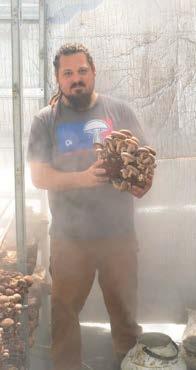
Janikowski starts his mushroom growing process with a mixture of wood pellets, similar to what you might use in a wood burning stove or cat litter box. The pellets are mixed with water in a cement mixer until they reach the right level of hydration. This growing medium, or substrate, is then loaded into another homemade machine that continues mixing the product while a pneumatic arm, operated by a foot pedal, dispenses perfect portions of pulp into the growing bags.
The filled bags are placed on rolling racks and steamed in the autoclave to create a hermetic environment before being loaded into the clean room, where they are inoculated with spawn for each variety of mushroom.
While the inoculated bags look at first as if they are filled with loose sawdust, that changes over the coming weeks on the incubation racks. Slowly the thread-like mycelium begins to develop, feeding off the substrate and creating a firm Styrofoam-like structure. Depending on the species, mushrooms can require anywhere from two weeks to three months to incubate.
Once the mycelium has taken over and the bags are firm, the mushroom will begin to “pin,” which is the stage wherein the fruit actually begins to emerge from the mycelium. The pinning bags are transported into the greenhouse where they are slit open and the warmer temperature and sunlight accelerate the fruiting.

A high-power humidifier sprays the greenhouse with mist every few
minutes to maintain a high humidity. While there is a misconception that all mushrooms must be grown in the dark, and certainly were grown in dark caves in the 1700s, different species require varying light levels. Janikowski specializes in what he calls “tree mushrooms,” which typically require more light, including shiitake, oyster, lion’s mane and reishi.
In general, the fruiting mushrooms will double in size each day and are ready to be harvested within a week of pinning. Depending on the species, each block continues to fruit for several weeks before being turned into the compost pile. In our mushroom cave at The Bear and Star in Los Olivos, we easily grow enough to serve a range of fresh and unusual varieties in the restaurant year-round.
Just as Monsieur Chambry and the stable attendants literally stumbled on the first cultivation method for champignons de Paris, people continue to try and tame wild delicacies from the fungi world. From scientists cultivating chanterelles in Finland, to oak trees inoculated with truffles in Oregon, mycologists and mushroom lovers are eager to unlock the unique riddle of each species. How lucky we are to have access to this bounty of mushrooms in our own backyard—but only if we can cook them correctly!
The former executive chef at Post Ranch Inn’s Sierra Mar, John Cox is now pursuing a number of projects, including serving as a partner and contribution chef at Culture—comida y bebida in Carmel and chef-partner at The Bear and Star at the Fess Parker Wine Country Inn in Los Olivos. For more, go to www.chefjohncox.com or follow him on Instagram and Facebook.
44 edible MONTEREY BAY WINTER 2018
Racks of mushrooms growing at Far West Fungi in Moss Landing and mushroom grower Branden Janikowski at his home farm.
Photo by John Cox
BIG SUR CHANTERELLE RISOTTO
 Courtesy chef Craig von Foerster
Courtesy chef Craig von Foerster
Sierra Mar was my first real cooking job out of culinary school. Chef Craig was an incredible mentor to me and many other young cooks who had the opportunity to spend time in his kitchen. His chanterelle risotto recipe remains one of my all-time favorite mushroom dishes. Sometimes it’s impossible to improve on a classic recipe and I hope you will enjoy this iconic Big Sur dish! Chef Craig was kind enough to let us use this classic recipe that was originally published in the Sierra Mar cookbook.
Risotto Base
2 cups vegetable stock 2 tablespoons olive oil
1/4 yellow onion, finely diced 1 cup carnaroli rice
Place stock or water in a saucepan and bring to simmer. In a 2-quart saucepan, heat the oil over medium heat and add the onion; cook until translucent, about 2 minutes. Add rice to the onions and stir to coat with oil; add just enough simmering stock to barely cover the rice. Keep heat at simmer, occasionally stirring and adding more liquid as needed to keep the rice covered. After the last liquid is added, simmer for 1 more minute. At this point there should be a creamy liquid surrounding the rice. Turn out the pre-cooked risotto into a shallow pan;
mix occasionally with a spatula while cooling to keep all the rice evenly cooked. When cooled, completely store in tightly sealed container until ready to use.
Mushroom Jus 1/4 cup dry porcini mushrooms
1 cup hot water
3 tablespoons canola oil 2 cups yellow onion, julienned 2 cloves garlic, chopped 6 cups assorted mushrooms, sliced ¼ cup tomato paste
1 cup sherry wine 10 sprigs thyme 1 tablespoon soy sauce
Soak the porcini in hot water until hydrated. Heat the oil in a pan over high heat. Add the onions and reduce heat to medium. When onions begin to brown, stir with a wooden spoon, scraping the bottom to loosen up any browned bits and redistribute the onions. Add a few tablespoons of water and scrape the bottom to completely deglaze. Once onions are golden, about 20 minutes, add the garlic and mushrooms. Cook until the mushrooms have given up their liquid and begin to caramelize, about 10 minutes. Add tomato paste and cook 5 more minutes or until it begins to caramelize on bottom of pan. Add sherry wine and porcini with their liquid, being careful not to add sediment at bottom. Scrape bottom of pan to deglaze pan again. Reduce liquid until almost dry. Add water and thyme and simmer for 45 minutes. Strain.
Completing the risotto
1 batch risotto base
1¾ cups hot mushroom jus 2 cups pan-roasted chanterelles (see sidebar for cooking instructions)
2 tablespoons butter
3 tablespoons Parmesan 1½ teaspoons fresh lemon juice
1½ teaspoons kosher salt ¼ teaspoon black pepper, freshly ground 2 tablespoons truffle butter
1 tablespoon chives, snipped
Add the risotto base to a small pot and then add enough hot mushroom jus to barely cover the rice. Over medium heat, bring to a simmer, stirring frequently with a wooden spoon. Continue adding more jus as it is absorbed to keep the rice covered. When most of the jus has been absorbed, add the roasted chanterelles, stir and continue to cook for 1 minute more. At this point the rice should be suspended in a creamy liquid and the grains of rice should be cooked through but firm. Remove from heat and fold in the remaining ingredients, adjust seasoning. Serve immediately.
Chef’s Note: Check the consistency by eating a few grains of rice. If the rice is too hard, add a little more mushroom jus. Serves 4.
www.ediblemontereybay.com 45
Photo by John Cox






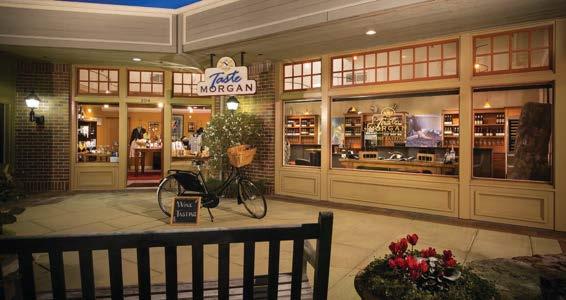
























46 edible MONTEREY BAY WINTER 2018 Open 11:00 - 6:00 pm daily Located in the Crossroads, Carmel Rio Road at Highway One 831.626.3700 morganwinery.com
BEHIND THE BOTTLE
VINTAGE FRIENDSHIPS
Now in its 42nd year, Redwood+Vine is a place for do-it-yourself winemakers
 BY AMBER TURPIN PHOTOGRAPHY BY CRYSTAL BIRNS
BY AMBER TURPIN PHOTOGRAPHY BY CRYSTAL BIRNS
“Wine made among friends” is how Mike Kubo describes the guiding principle of the Redwood+Vine wine co-op, for which the NASA scientist has served as head winemaker since 2004, leading the Santa Cruz Mountains-based group of do-it-yourselfers from sourcing and crushing fruit to bottling and aging their vintages. “What is best for each other is best for the wine.”
There is a longer and deeper story here that pre-dates Kubo by almost 30 years, beginning in the 1970s when a bunch of UC Santa
Cruz grad students in astronomy, including David Soderblom and Jesse Bregman, started going to a wine shop at the Cooper House (demolished following the Loma Prieta earthquake) for the weekly wine tasting. The exposure to different varietals sparked the friends’ interest in the craft, and they decided to give it a go on their own. Their first vintage in 1976 was a Cabernet Sauvignon made in the Bregmans’ garage on Branciforte Drive in Santa Cruz, so they called their enterprise Branciforte Winery.
www.ediblemontereybay.com 47
From crush to bottling, members of the co-op share all parts of the winemaking process


Local poet Ziggy Rendler-Bregman is a founding member of the wine co-op and unofficial historian of the group. She has some of the original labels, notes written down about certain vintages and memories of her children growing up with winemaking in their home space. “The kids loved punching down the cake into the juice,” she recalls. “It was this volcano-like pink foam oozing up, making this sound, like a big witch’s brew...it was the brew of the fall harvest.”
To make things more legally legit and for tax reasons, the group had to come up with some structure. Because it was based at his house, Bregman had the group in his name and was deemed head winemaker. A big part of the appeal of working communally was so the group could split costs of the equipment, barrels, grapes and even label printing. RendlerBregman has prices written down from those years that are incredible. “In 1978 we could get 2,000 pounds of white and red wine grapes for a total of $400,” she says. Monterey County Pinot Noir cost $400 for one ton, while Cabernet Sauvignon from Rutherford in Napa Valley was $325 for half a ton. Prices are at least 10 times that today.”
To capture the special Central Coast sense of place and to solidify that guiding principle that still holds true today, the group came up with a new name for its label, “Ohlone: A Wine Made Among Friends.” But despite good intentions, the name became a controversial element for the group, ultimately leading to some big shifts.
“That was sort of a complicated thing that happened with the group. Every group has its evolution. When we picked that name, one of the
members was friends with the [Ohlone] tribe and they said, ‘No problem.’ And then, after 30 years someone joined the co-op who had deeper questions about the fundamental meaning of that name. It became a conversation that had to happen,” Rendler-Bregman explains.
At that point, when the group contacted the tribe’s spokesperson, they all decided that out of respect for the tribe it would be best to release any associations with alcohol that the wine group’s name might bring up. And so, the name changed again, to the current “Redwood+Vine.” Winemaker Kubo says, “We really wanted something that still addressed a sense of place.” And they definitely put some thought into it: “We took over two years to come up with it!” he adds.
Kubo came onto the scene in 2004 when the co-op’s previous winemaker decided to quit. That meant the space the members were using to make wine was no longer available, so it was a delicate time and they came close to dissolving. But the original members would not give up and they got in touch with an associate of theirs, UCSC professor and Pelican Ranch Winery owner Phil Crews. Kubo had worked closely with Crews for several years, after getting a chemistry degree from UCSC in the late ’90s and gaining some experience at David Bruce. Kubo had been Crews’ assistant winemaker when Pelican Ranch was just getting started. “I took pay in wine!” Kubo recalls.
By the time the co-op reached out to him, Kubo was actually planning to take a step away from commercial winemaking, to focus on his own career in astrobiology, but didn’t want to give up wine complete-
48 edible MONTEREY BAY WINTER 2018
ly. “At the time it was my opportunity to really make wine and have some creative direction on where the wine was going without spending a bunch of money on a winery,” he says, adding, “It was a cool way to meet a lot of really interesting people.”


Friendship is key in making the co-op work. The 10 families that belong have two main events each year. The first is a spring potluck to discuss the varieties and styles they want to choose for that year’s vintages, usually two to four wines. In fact, Kubo estimates only about half the grapes they source are from actual wine industry contracts, and the other half from “super random” connections. Oftentimes a friend of a friend lives somewhere and knows someone, which results in a special opportunity.
For example, Rendler-Bregman remembers that on a writing retreat in Ireland 10 years ago, she discovered that one guy on the trip owned a vineyard in the Silver Oak region of Napa. He told her to just email his son, who managed the vineyard, and tell him that she wanted to buy some grapes. “That was one of the best vintages we’ve ever made,” says Kubo of the Cabernet Sauvignon. And ultimately, the fruit that the group works hard to source, either from known contacts, serendipity or networking, is just one example of the meticulous attention to detail that its finished wine shows. “You can’t make good wine from lousy fruit; it makes a huge difference,” she says.
The second event is a post-harvest potluck to celebrate the members’ efforts. And even though these are the only steadfast events on the calen-
dar, casual tastings and social gatherings also occur. “During harvest we see each other all the time,” says Kubo. The work that is required varies, as people have different schedules and daily demands. But the participation hours are hardly used as collateral, or tracked by anyone. Again, the power of the co-op is that “in the long run it all works out,” says Kubo. It is the friendship (and quality fruit and experienced winemaking) that makes the wine taste that much better. “You can have a great product, but it’s really about the people,” adds Rendler-Bregman.
After all these years, she says, “Mike is the best thing that has happened for the group so far! He is a match made in heaven, so fabulous, so devoted, so fantastic, so knowledgeable.” The Bregmans themselves are no longer part of the co-op, but they’re grateful to see it continue. “This is the second harvest we have not been a part of, and it still feels strange,” she says. “It ran its course with me and my husband, and now it’s time for the next generation. It is wonderful to see that it’s still going.”
www.ediblemontereybay.com 49
A big part of the appeal of working communally was so the group could split costs of the equipment, barrels, grapes and even label printing.
Amber Turpin is a freelance food and travel writer based in the Santa Cruz Mountains.
TRY THIS AT HOME: Redwood+Vine is not currently looking for new members, but the winemaker would be happy to answer questions by email: michael.dy.kubo@gmail.com
EDIBLE COMMUNITY MUTUAL MEDICINE
Cooking for friends in need has unexpected benefits
 BY JESSICA TUNIS PHOTOGRAPHY BY CRYSTAL BIRNS
BY JESSICA TUNIS PHOTOGRAPHY BY CRYSTAL BIRNS
50 edible MONTEREY BAY WINTER 2018
My heart cracks when I hear the news; her cancer has come back. I read the words on a screen, so she doesn’t see the way my eyes fill and sting immediately, blurring the text with grief, but she knows me well enough that I think she must guess. We have been here before, we friends, and it is likely we will be here again. So we discuss, as the days pass slowly one after another, how the treatment will unfold. Where is the cancer? Will there be surgery, or chemotherapy or radiation? Doctors take scans and outline plans. Insurance companies haggle over drug benefits and treatments. I take down a pan and brown onions. It is my part to play.
oOr this. Finally, the baby is here. The new parents ride a roller coaster of sleepless nights, intense emotions, and constant attention to nursing, changing, burping and comforting consumes all of their energy as they learn the rhythms of a new life. Exhausted, it feels sometimes like there is no time for showers, meal planning or household chores. Parents snack when they can, lose sleep, get by. Friends arrive with casseroles and no expectation of being entertained. Dinner is served, and the community is nourished.
Cooking for others is a tradition as old as time. Whether the occasion is a birth, a wedding, a death in the family, an illness or an accident, the concept of the meal train is alive and well. Participating in a meal train, or other acts of caregiving, give shape and form to the ageless desire to be of service, or even more broadly, to belong.
The joyful communion in celebrating a new life, and the process of grieving and loss share a common root, connecting those involved to the twin specters of human experience. No matter which occasion draws communities together, there is a craving to do something, to take action, even on a small scale. This urge strengthens connections between individuals and communities, draws us together in a way that feels valuable and necessary.
In the face of grief, the act of cooking for friends in need is an act of both defiance and love. It is a path to follow, a task to perform, a way to make sense of the senseless or at least find a way through it. It’s as much for myself as for my sick friend that I participate, and I am grateful for the outlet. I am thankful to be able to take any action, no matter how small, in the face of something as huge and terrifying as cancer. My friend stares death in the face, takes stock. She is whittled to bone. She sees what matters and what does not. I creep closer, trying to see things through her eyes. She is on the cusp between worlds.
I try to draw her back, toward this side, this earth, toward apples and soup and tea in the evening. I leave Tupperware containers full of food in her refrigerator, to anchor her to this place, edible love letters to be tasted with spoon or fork. I mean the food to say what I cannot. Bone broth, to nourish and soothe the gut, strengthen bones made brittle by treatment. Easy on the salt and acid, as radiation can cause mouth sores that make these elements painful.
Although food can taste like cardboard in the weeks after chemotherapy, the solution is rarely more spices; the body in crisis often requires bland foods, easy to digest, rich in nutrients, but light on the tongue. Soothing food, steadying, comforting, as though the food were a conduit for all the things that are too difficult to put into words. As though through the bland, soft flavors of the food, the hard and bitter truths could be transformed. It is medicine for both of us.
When we cook in celebration of births, weddings and other milestones in life, we get closer to those moments of ecstatic joy that are touchstones of human experience. There is a kind of magnetism that pulls us toward these intense times. When I cook for friends deep in the throes of new parenthood, I am not only strengthening the connection between my family and theirs, but I am also given permission to come closer, into that tender circle that surrounds new families. It’s a sacred time, sometimes difficult and often tumultuous, but no less sacred for all that. In the first weeks of parenthood, so much is shifting and changing. Priorities are rearranged in ways that may not have been foreseen.
As a friend, it’s an honor to support my community by feeding them as they work it out. I feed them as I wish for all to be fed, I care for them as I would have everyone cared for, in all stages of life. There is a ceremonial aspect to it, though I am a fairly secular practitioner. A paying of homage, a wish and a prayer for continued care and attention, throughout all their lives. As though the way something is begun might carry through and echo throughout the years. There are a thousand ways to make a difference in the world, and never enough time for a person to do as much as they might. Still, this is something to do, easy enough, in the face of all the difficulties humans encounter. Sit down, my family, my community. This food is grace. May we all be nourished.
The act of giving makes me feel less helpless, more connected. I chop onions, I make yogurt and vegetable ferments and bone broth. I salt my food with wishes, prayers and dreams. I long for a magic

www.ediblemontereybay.com 51
In the face of grief, the act of cooking for friends in need is an act of both defiance and love.
A GLOBAL CAREER






The Hospitality and Tourism industry is the largest and fastest growing industry in the world.



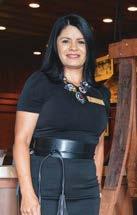





faculty will help YOU complete your goals, whether they include completion of a speciality certificate, an associate degree, or transfer to CSUMB's Sustainable Hospitality Management Program through our 2+2 partnership. Advance quickly towards an exciting career in Hospitality by starting now
ENROLL NOW

wand, a spell that breaks the enchantment of wayward cells, for an order in the universe that might prevent awful things happening to good people. I mince herbs and envision a future where all children might grow up in peace and plenty. I reduce heat and simmer; I imagine impossible things that do not immediately materialize. What does take form, though, is a pot of soup, or a vegetable dish, a tangible act of love, seasoned lightly with defiance, compassion and hope. No magical wand, but a wooden spoon to stir a simple pot. It may not be the cure that ultimately heals my friend, but food prepared with love is another kind of medicine, no less essential, that nourishes both the giver and the receiver alike.
Jessica Tunis lives in the Santa Cruz Mountains and spends her time tending gardens, telling stories, and cultivating adventure and good food in wild places.

MEAL TRAINS
The meal train is a venerable tradition. In the tightly woven communities of times past, such coordination would have taken place amongst neighbors and family, as a matter of course. In the age we now inhabit, this cooperative community engagement is now often facilitated by apps such as Care Calendar, Meal Train and Take Them A Meal.
Care Calendar has an easily navigable website that offers options to support families and individuals by making meals, as well as running errands, washing laundry and driving patients to appointments. Recipients list the services they need. Caregivers specify the meal or service they can provide, in a format that allows other volunteers to view it, so that flavors and services are not duplicated too often, and no external management is needed. There’s a space for photographs and messages from the community as well.
Meal Train can be managed by an organizer so the patient does not have to manage the sometimes complex scheduling. It features an interactive online calendar, and sends reminder emails to participants both one day and one week in advance of the actual date. Recipients can specify food preferences and allergies. It includes easy links to order online gift cards and make financial contributions.
Take Them A Meal is a mostly food-centered site. It offers tested recipe ideas that are known to transport well. Its distinctive feature is the option for busy or far-flung supporters to order a meal for delivery through the company’s meal store. Gluten-free and vegetarian meals are available, but food ordered through the site is not necessarily organic.
Local non-profit Teen Kitchen Project offers free and lowcost meals to residents who are dealing with cancer and other acute illness. Its program acts as a kind of meal train for those who may not have a tight web of community to cook for them, and gives preferential access to those with limited resources and support.

52 edible MONTEREY BAY WINTER 2018
Monterey • Marina • Seaside • Online mpc.edu | (831) 646-4000
Our experienced
at MPC!

www.ediblemontereybay.com 53
Best Butcher Shop
– Santa Cruz Sentinel
THE PRESERVATIONIST ORANGE CRANBERRY MARMALADE

Perfect for a winter holiday breakfast or brunch
BY JORDAN CHAMPAGNE PHOTOGRAPHY BY MARGAUX GIBBONS
54 edible MONTEREY BAY WINTER 2018
Fresh winter oranges are such a delight in the deep, cold winter. It is actually a treat to slice oranges for an hour or two while making this recipe, with their fragrance lifting one’s spirits the whole time.
The color, texture and flavor of this marmalade are remarkable. The cranberries maintain their independent structure in the translucent medium of the oranges. They add a rosy glow and delicious tart flavor to balance against the sweetness of the oranges.

The joy of preserving fruits is like hanging out with an old friend in the kitchen. Life is short and time is scarce, but making your own marmalade can be a luxury that we should all afford ourselves. Then you can share the experience as you give away these delectable gifts to the ones you love!
½ pound lemons, whole, quartered with seeds and center membrane removed and sliced crosswise 1 pound oranges, whole, quartered with seeds and center membrane removed and sliced crosswise 1 pound oranges, peeled, pith completely removed, quartered with seeds and center membrane removed and sliced crosswise 3 cups cranberries, fresh or frozen Water to cover (about 6 cups) 4 cups organic cane sugar
Day 1: Oranges have less pectin in them than lemons do, so for this marmalade I include all of the rinds of the lemons to be sure it gels up nicely. Prepare the lemons by first washing and removing the ends, then slicing them in half lengthwise and then into quarters. You can now slice down the center of the fruit and remove the extra membrane and the seeds and reserve. Next, slice the wedges crosswise, making tiny triangle shapes. Add to pot.
Prepare half of the oranges the same way, by first washing and removing the ends, then slicing them in half lengthwise and then into quarters. Slice down the center of the fruit and remove the extra membrane and the seeds and reserve. Next, slice the wedges crosswise, making tiny triangle shapes. Add to pot.
With the other half of the oranges you want to remove all of the rind, adding only the chunks of fruit. With your knife, remove all of the rind and pith from the fruit and set them aside for another project. Slice the fruit into half lengthwise and then in quarters. Remove seeds and center membranes and slice fruit into small chunks. Add to the pot.
Take all of the seeds and membrane and place in a cloth tied VERY WELL. I recommend using “flour sack” cloth that you can find at
most hardware stores. You can cut the fabric into the size that you need and reuse it again and again. There is a lot of pectin found in the seeds and pith that you do not want to simply discard and lose. Do not worry if you do not have a lot of seeds, as the lemon contains a lot of pectin that will contribute to the gel set.
Add the pectin bag to the pot with your lemons and cover with water. In a covered pot, bring contents to a boil and then simmer for about 1 hour until the peels are completely tender and the liquid is viscous. Remove from heat and leave pot, covered, overnight or up to 24 hours, in a spot that will not be above 80° F. Most countertops are fine. This step is so that your peels continue to soften nicely and the pectin continues to be released from the fruit.
Day 2: Put five plates in your freezer that you will use later to test your gel set. Begin to heat up your pot again and when it is warm to touch, remove the pectin bag. You are now going to do one of the more unglamorous things to do in the kitchen, which is squeeze out your pectin bag. You can use the same hand movement as if you are milking an animal and try and get every last drop out of the cloth. This is your extra pectin that will help your marmalade gel up beautifully. In an uncovered pot, bring contents to a boil. Next, add the sugar and continue to stir the contents until all of your sugar has dissolved as to not scorch. Add the cranberries once the contents come to a boil. Continue to boil until your marmalade comes to the desired consistency, stirring occasionally or when needed to prevent scorching. This will take anywhere from 15–45 minutes. Test the gel set by placing a small amount of the marmalade on the plate and returning it to the freezer to cool. Once it is cool to touch, remove the plate and test its consistency. Turn off the heat once your marmalade reaches the desired consistency. When finished, remove from heat, fill jars and place in a hot water bath for 10 minutes for ½-pint jars. Yields 7½ pint-sized jars.
Variation: Ginger would be a nice addition to this marmalade. Add ¼–½ cup of peeled grated ginger.
Jordan Champagne is the co-owner and founder of Happy Girl Kitchen Co. She has a passion for preserving the local, organic harvest and loves sharing her secrets at workshops she teaches in Pacific Grove and in Oakland.
www.ediblemontereybay.com 55
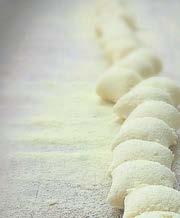









56 edible MONTEREY BAY WINTER 2018 MONTEREY BAY MARKETPLACE • MONTEREY BAY MARKETPLACE HOURS: MON-WED 7AM-3PM, THUR-SUN 7AM-9PM Body Care Evolved Eczema Relief Ache & Pain Relief Sugar Scrubs Bath Bombs Lip Balms 10% OFF! Code: EDIBLE CBDNHONEY.COM A CULINARY ADVENTURE EXPERIENCE
Dine Local GUIDE
All of these restaurants emphasize local ingredients, and they also advertise in Edible Monterey Bay! Stop by for a free issue, and tell them that we sent you!
APTOS
Persephone 7945 Soquel Drive 831.612.6511 • www.persephonerestaurant.com
With a namesake like the mythic Persephone, this restaurant in Aptos proclaims its deep reverence for seasonal cooking. emes central to harvest, winter and spring are core to Persephone’s story, and are re ected in the changing menu at this ne dining destination, where chef Cori Goudge-Ayer presents inventive, ingredient-driven creations. e restaurant is a familyrun passion project, bringing together parents, siblings and a long history of culinary arts in a beautifully redesigned space overlooking Aptos Creek. Open W–Su 4:30–9pm.
BIG SUR
Sierra Mar at Post Ranch Inn 47900 Highway 1 831.667.2800 • www.postranchinn.com

Executive chef Elizabeth Murray uses exceptional ingredients, many grown on site, to deliver a unique gastronomic take on the Big Sur experience. Lunch offers a 3-course prix xe menu, while dinner features a 4-course prix xe menu. Choose from almost 3,000 di erent wines from the Wine Spectator Grand Awardwinning wine list. Arrive before sunset for breathtaking views from this iconic restaurant’s oor-to-ceiling windows and cli side terrace. Open daily for lunch noon–2:30pm, dinner 5:30–9pm. Advanced reservations required. Please note that dinner guests will not be admitted before 5pm.
CAPITOLA
East End Gastropub

1501 41st Avenue 831.475.8010 • www.eastendpub.com
East End Gastropub is the newer baby sister to the popular West End Tap & Kitchen, but aside from sharing owners and chefs, East End’s beautiful, recently renovated modern interior is entirely di erent from West End and o ers its own robust, sophisticated, beer-friendly menu. Chef Geo rey Hargrave has created dishes that are familiar yet innovative, such as crispy gigante beans with smoked creme fraiche and coq au vin. Share plates, pizzas and salads come in generous portions for a family-style meal. e restaurant also o ers its own brews, along with local rotating taps and a strong wine list. Open Su– 11:30am–9:30pm, F–Sa 11:30am–10pm. Weekend brunch 10:30am–2:30pm. Happy hour M–F 4–6pm.
e Penny Ice Creamery

820 41st Avenue
831.204.2523
• www.thepennyicecreamery.com

Open Su– noon–9pm, F–Sa noon–10pm See e Penny description under Santa Cruz for more.

Shadowbrook

1750 Wharf Road 831.475.1511 • www.shadowbrook-capitola.com
A Santa Cruz County landmark since 1947, the worldfamous Shadowbrook continues to be an overwhelming favorite with locals and visitors alike. Its ne food, extensive wine list and unparalleled setting and ambiance have earned it numerous awards, including
www.ediblemontereybay.com 57
In tune with nature, the Butterfly Effect cocktail at Lucia Restaurant & Bar at Bernardus Lodge in Carmel Valley is made with Empress gin, Clear Creek Slivovitz blue plum brandy, Luxardo and lemon. More on the cuisine at Lucia on page 60.
Photo by Rob Fisher
Northern California’s “Most Romantic Restaurant” and “Best Date Night Restaurant.” Gift cards and reservations available online. Open M–F 5–8:45pm, Sa 4:30–9:45pm, Su 4:30–8:45pm.


CARMEL

Aubergine
Monte Verde Street at Seventh Avenue 831.624.8578 • www.auberginecarmel.com
Located within the romantic L’Auberge Carmel, a visit to Aubergine feels like a trip to Europe. Executive chef Justin Cogley was named one of Food & Wine’s best new chefs of 2013. He has been nominated multiple times for a James Beard award and it’s no wonder— he’s an eloquent and imaginative interpreter of ne seasonal ingredients. Executive pastry chef Yulanda Santos delights with stunning and inventive desserts. Open daily 6–9:30pm.
Basil Seasonal Dining

San Carlos street between Ocean and Seventh avenues (Paseo Courtyard) 831.626.8226 • www.basilcarmel.com
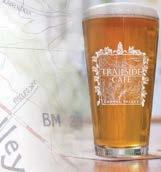
“Organic, local and seasonal” are not just buzzwords at Basil. is cozy restaurant in the Paseo Courtyard was awarded three stars from the national Green Restaurant Association. New chef, Mary Lester, and owner, Denis Boaro, continue to provide a full bar and great selection of California and Italian wines, including Old and New World. Check website for information on monthly winemaker dinners and other events. Many vegan and vegetarian entrées available. Heated, dog-friendly outdoor seating. Open daily for lunch and dinner from 11:30am, Sa–Su brunch 11am–2pm.
Covey Breakfast Restaurant

8000 Valley Greens Drive 831.620.8910 • www.quaillodge.com

Overlooking a pond and manicured grounds, the newly remodeled Covey Breakfast Restaurant includes motorcycles from the Moto Talbott Museum in Carmel Valley in a nod to Quail’s annual motorsports event, while chef Brian Kearns captures the essence of a home-cooked Carmel Valley meal. e weekday à la carte menu includes nourishing skillets, eggs benedict and huevos rancheros; on weekends, enjoy an enhanced American breakfast bu et. Both indoor and outdoor seating come with beautiful views. Open daily 6:30–11am.
Earthbound Farm’s Farm Stand Organic Kitchen


7250 Carmel Valley Road 831.625.6219 • www.earthboundfarm.com
At its newly renovated Carmel Valley Farm Stand, Earthbound Farm’s 100% certi ed organic kitchen delights with housemade soups, sandwiches, a newly expanded salad bar, baked goods and fresh juices and smoothies. Food is available to be enjoyed on our beautiful grounds or for takeaway. Experience picturesque Carmel Valley as you stroll through Earthbound’s organic gardens and learn about its pioneering local heritage and commitment to organic integrity. And as always, pick up some fresh, local organic fruits and veggies. Visit our website or check out Facebook for hours, special events and classes!

• Breakfast, Lunch and Dinner Daily • 50+ beers • Local Wine • Happy Hour 4 - 6pm Daily • NFL Sunday Ticket • Onsite Catering • Cozy fireplace Whatever trail you’re on, we have what you need to refuel and relax 3 Del Fino Place Carmel Valley 831.298.7453 trailsidecafecv.com 58 edible MONTEREY BAY WINTER 2018
Edgar’s at Quail

8000 Valley Greens Drive 831.620.8910 • www.quaillodge.com

Taste the fresh ingredients harvested from local organic farms that are hand selected by Edgar’s executive chef Brian Kearns and exquisitely prepared by his culinary team into the savory dishes available on its new menus. Set in the clubhouse of Quail Lodge & Golf Club, Edgar’s restaurant and bar features a casual elegance with its indoor and outdoor reside dining located alongside the natural backdrop of the golf course and Santa Lucia Mountains. Edgar’s at Quail is proudly guided in the principles of sustainability by the Monterey Bay Aquarium Seafood Watch and focuses on local farmto-table options. Open daily 11am–9pm.



États-Unis French-American Bistro






Dolores Street between Fifth and Sixth avenues 831.238.6010 • www.etatsuniscarmel.com
French comfort food made with locally sourced organic ingredients is a winning combination for États-Unis, helmed by award-winning chef Soerke Peters. e cozy, casual restaurant in downtown Carmel-by-the-Sea features favorites like quiche Lorraine, sweet or savory crêpes, escargot, bouillabaisse and beef cheek bourguignon, as well as housemade pâtés, charcuterie and hearty hors d’oeuvres, perfect for enjoying with a glass of wine. Open daily 7am–3pm, –Su 5–9pm.






Il Grillo


Mission Street between Fourth and Fifth avenues 831.238.9608 • www.ilgrillocarmel.com

A more casual yet equally outstanding sister to Carmel’s La Balena, Il Grillo is staking out its own creative culinary personality with the addition of longtime local chef Brandon Miller. Homemade desserts are by Emily Garcia. Both Miller and Garcia share a wealth of local food knowledge and traditions shine through their cooking. Dinner menus are driven by local and sustainably raised ingredients, with beautiful and delicious results. Garden seating available. Open M–Sa 4–9pm.
La Balena


Junipero Street between Fifth and Sixth avenues 831.250.6295 • www.labalenacarmel.com
Winner of EMB’s 2014 Local Heroes award for Best Chef/Best Restaurant, La Balena has a seasonal menu that changes daily but always expresses an inventive take on the rustic food of a Tuscan trattoria. e outstanding culinary team sources ingredients from local organic farms and prepares the restaurant’s pastas and slow-cooked meats from scratch daily. Owners Anna and Emanuele Bartolini have created an excellent Italian wine list and a warm, inviting atmosphere, complete with back garden seating. Open Tu-Su 11:30am3:30pm, 5-10pm.
Waypoint Bar & Deck

8205 Valley Greens Drive 831.620.8910 • www.quaillodge.com




Locals and visitors alike have an exciting and beautiful new spot to stop for a whiskey ight, local craft beer, creative cocktails, wines by the glass or bottle, and contemporary small bites and appetizers made with local, sustainable ingredients. e new Waypoint Bar & Deck o ers monthly chef specials like “Bubbles

www.ediblemontereybay.com 59
OCEAN TO TABLE· 100% LOCAL & ORGANIC LUNCH FRI-TUES 11:30-2:30 · DINNER DAILY 5PM WWW.WILD-FISH.COM · 831.373.8523 · WILDFISHPG@GMAIL.COM
Enjoy family.
& Birdies” (fried chicken and Champagne) and a tantalizing regular menu featuring such items as chef Brian Kearns’ beef Shortrib Nachos with Charred Avocado, Roasted Heirloom Carrots, burgers, atbreads and duck fat fries. Also available for private events, rental fees apply. Open W–Su 5–10pm.
CARMEL VALLEY
Jerome’s Carmel Valley Market
2 Chambers Lane 831.659.2472 • www.jeromescarmelvalleymarket.com
Already known for its specialty groceries, meats and fresh local produce, this beloved market is now serving classically French-trained chef Jerome Viel’s delicious hot prepared foods, sandwiches and mostly organic salad bar for eating at comfortable outdoor seating or takeaway. e o erings start with breakfast burritos, croissants and other French pastries in the morning, followed by favorites such as coq au vin, spaghetti carbonara and chicken enchiladas for lunch. On Friday afternoon, the big paella pan appears just in time to take some home for dinner. Open M–Sa 7am–7pm, Su 7am–6pm.
Lucia Restaurant & Bar

Bernardus Lodge & Spa • 415 W. Carmel Valley Road 831.658.3400 • www.bernarduslodge.com


Indulge in artisanal California country cuisine, award-winning wines and an expansive heated outdoor terrace with the nest restaurant view in Carmel Valley. Named for the Santa Lucia mountain range and wine appellation that beckons to the south, renowned chef Cal Stamenov serves both his signature tasting menu and dishes à la carte. Wine list is equally notable. A private chef’s table and wine cellar are also available. Enjoy live music Monday, Tuesday, Friday and Saturday evenings and at Saturday and Sunday brunch. Open daily 7am–10pm.
Trailside Café and Beer Garden
3 Del Fino Place 831.298.7453 • www.trailsidecafecv.com
ose needing to refuel after a day on the trail can head to Trailside Café for home-cooked meals in Carmel Valley. Beer lovers get to choose from 50+ draft and bottle choices, and sports fans can watch games on the HDTVs. Locals are treated to specials on Mondays and Tuesdays. On the weekends enjoy live music in the beer garden. Check out the calendar on its website for more details. Dog friendly in outdoor areas. Open daily 8am–9pm.
DAVENPORT
Whale City Bakery

490 Highway 1 831.423.9009 • www.whalecitybakery.com
Davenport’s artistic charm and oceanside location make it hard not to slow when you pass through on Highway 1. ose in the know always stop at the historic Whale City Bakery. e bakery tempts with housemade breads, pastries, mu ns and pies—and that’s only the beginning! Whale City also o ers a full restaurant that serves up comfort classics and other hearty dishes. e bar and live music every ursday attract a loyal local following. Open daily 6:30am–8pm.
TASTING ROOM-SAN CARLOS & 7TH, CARMEL-BY-THE-SEA FAMILY-OWNED & ESTATE GROWN SINCE 1972 • SCHEIDFAMILYWINES.COM
KURT GOLLNICK – COO, TYLER SCHEID – PROJECT MANAGER, SCOTT SCHEID – CEO, HEIDI SCHEID – SR. VICE PRESIDENT, AL SCHEID – CHAIRMAN, FOUNDER
60 edible MONTEREY BAY WINTER 2018
FELTON
e Cremer House

6256 Highway 9 831.335.3976 • www.cremerhouse.com
Housed in the oldest building in Felton, e Cremer House showcases progressive, made-from-scratch food and drinks with a nod to its historic mountain surroundings. is alehouse has lled a niche in the San Lorenzo Valley, bringing to this restored and revered property craft beer, cider and wine on tap, and combining it with organic and sustainable fare made with local ingredients. Open Tu– , Su 11:30am–9pm, F–Sa 11:30am–9:30pm.
Wild Roots Market
6240 Highway 9 • 831.335.7322 (Felton) 13159 Highway 9 • 831.338.7211 (Boulder Creek) www.wildrootsmarket.com
Wild Roots’ 100% organic produce, natural groceries, organic meats and FishWise-certi ed seafood all go into the prepared foods o ered by the store’s fullservice deli, salad and soup bar and juice bar. Open daily 9am–9pm. Enjoy on the patio or take home.


KING CITY
e Cork & Plough

200 Broadway Street 831.386.9491 • www.thecorkandplough.com
It’s no wonder that e Cork & Plough is a favorite stop for travelers on the Hwy. 101 corridor and Salinas Valley locals alike. e downtown location is convenient; the hip, airy room and its massive tinted concrete bar are inviting; and the terri c food is prepared by chef/ proprietor Travis Childers and sous chef Will Bergeron with super-fresh ingredients direct from local farms. And if you’re not the designated driver, don’t miss the cocktails crafted with housemade infusions by head bartender Rob Marshall or the wines and beers carefully curated by co-proprietor Anna Childers. Open Su– 11am–9pm, F–Sa 11am–10pm.
MONTEREY
e Club Room 2 Portola Plaza 831.649.2698 • www.portolahotel.com/dining/theclub-room
e Club Room inside the Portola Hotel & Spa o ers a fresh, seasonal, breakfast bu et featuring made-toorder omelets, assorted housemade pastries and mufns, sliced cold cuts, ne artisan cheeses, bottomless mimosas and much more all for $19.95. Dine in the cozy fireside dining room, or breathe in the fresh coastal air on the outdoor, pet-friendly, heated patio. Open for breakfast daily 6–11am.
the C restaurant + bar

InterContinental e Clement Monterey 750 Cannery Row 831.375.4500 • www.ictheclementmonterey.com
Step into the C restaurant + bar, and the bustle of Cannery Row will seem like a world away. Elegant yet relaxed, the C o ers stunning ocean views from its oor-to-ceiling windows and oceanside deck. Executive chef Matt Bolton provides equally gorgeous food, imaginatively prepared from sustainably sourced seafood, meats and produce. Creative cocktails include international specialties, as well as sparkling wine
736 Water
Santa Cruz 831.457.2350

OCEAN

www.ediblemontereybay.com 61
Street Midtown
Sri Lankan Organic Restaurant Fresh, Local, Organic Ayurvedic Healing Food
Ayoma’s specially crafted White & Red Pearl Wines Work Party Catering
PEARL OF THE
Award Winning Chef Ayoma Wilen Best Chef America 2013
ights from around the world. Open daily 6:30am–10pm, Happy Hour 4–7pm Su– . Live Music F–Su noon–3pm, –Sa 6–9pm.

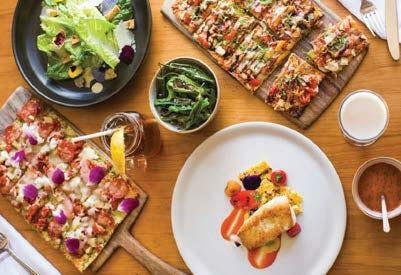
Jacks Monterey
2 Portola Plaza 831.649.7830 • www.jacksatportola.com

Jacks Monterey o ers “California Cultural Cuisine” and seats guests beneath the trees in a glass-topped atrium where they can enjoy the sun by day and the stars at night. Re ecting the palette of the Monterey Peninsula, the new space is decorated with ocean blues, driftwood browns and the greens of coastal ora. Chef Danny Abbruzzese’s new seasonal menu provides a melting pot of avor pro les from the entire California coastline and other exotic locales. Open for lunch daily 11:30am–4pm, dinner daily 4–11pm, Sunday brunch with live music 11:30am–3pm.
Peter B’s Brewpub

2 Portola Plaza
831.649.2699 • www.peterbsbrewpub.com
Experience Monterey’s original craft brewery, Peter B’s Brewpub, located behind the Portola Hotel & Spa. Enjoy great food and award-winning handcrafted beers. Watch your favorite game on one of 18 HDTVs or enjoy the pet-friendly heated patio with re pits. Peter B’s is open daily with nightly Happy Hour from 4–6:30pm, as well as late night happy hour Su– 9:30–10:30pm. Open Su 11am–11pm, M– 4–11pm, F 4pm–12am, Sa 11am–12am. Sunday breakfast and football 9:30–11am (Sept.–Dec.).
Schooners Coastal Kitchen & Bar



Monterey Plaza Hotel & Spa 400 Cannery Row 831.372.2628 • www.schoonersmonterey.com
Sit out on the newly remodeled oceanside patio if you can, but it’s still considered seaside dining if you are seated inside the dining room, where polished wood, bay windows and seafaring décor seem like the interior of a sailing ship. Schooners Coastal Kitchen & Bar serves sustainable seafood and prime steaks. e restaurant takes a creative Californian approach to soups, fresh salads, sandwiches and wood- red atbreads, paired with a diverse wine list featuring local favorites. Open daily 6:30am–11pm.
PACIFIC GROVE
Happy Girl Kitchen Co. 173 Central Avenue 831.373.4475 • www.happygirlkitchen.com e menu changes daily at Happy Girl’s airy and bright Paci c Grove café, but the food is always delicious, organic and reasonably priced. e sandwich of the day is $6.50, and a bowl of the soup of the day is $6. To drink, you’ll nd kombucha on tap and freshly roasted Verve co ee brewed to perfection. Homemade baked goods include a daily scone, cookies and turnovers. Check the website for information on seasonal workshops. Open daily 7:30am–3pm, co ee and tea served until 5pm.

WEST END Santa Cruz 471.8115 Lunch & Dinner everyday EAST END Capitola 475.8010 Dinner everyday, Lunch on Fridays & Weekend Brunch www.westendtap.com | www. eastendpub.com 62 edible MONTEREY BAY WINTER 2018
Jeninni Kitchen + Wine Bar
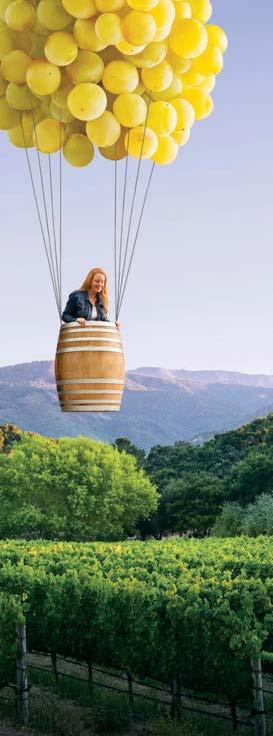
542 Lighthouse Avenue 831.920.2662 • www.jeninni.com
Inspired by flavors of the Mediterranean, Jeninni Kitchen + Wine Bar’s rich and decadent cuisine takes you on a journey from Morocco and Spain to the Levant, birthplace of owner and sommelier, amin Saleh. Don’t miss chef Matthew Zimny’s charred octopus, lamb burger with signature eggplant fries and occasional paella nights and other special events. Open every day except Wednesday, 5pm until close. Happy Hour—”sips and snacks”—4–6pm.
Passion sh

701 Lighthouse Avenue 831.655.3311 • www.passion sh.net

If you’re looking for a restaurant with playful, spectacular food and a scrupulous commitment to sustainability, this green-certi ed restaurant is hard to rival. e elegant dining room is celebratory yet relaxed, and the award-winning wine list features many sustainable names and is priced at retail. Chef Ted Walter’s menu is ever changing with the seasons, but always includes delicious organic local produce, inventive slow-cooked meats and an array of sustainable seafood choices. Open daily 5pm.
Wild Fish





545 Lighthouse Avenue 831.373.8523 • www.wild- sh.com


Owners Liz and Kelvin Jacobs welcome you to feast on the bounty of nearby waters and farms at their 100% local and organic seafood house, where chef Joshua Plesh creates exquisite dishes like crispy sablesh and sword sh au poivre, accompanied by succulent native seaweeds. Fresh oysters, innovative salads, house-baked bread and sides like ngerling potatoes with poppyseed crème fraîche or baby carrots with wild nettle pesto, make this a dining destination. Did we mention English sticky to ee pudding? Open for dinner Su– 5–9pm and F–Sa, 5–9:30pm, lunch F–Tu 11:30am–2:30pm.
PEBBLE BEACH
e Bench

e Lodge at Pebble Beach, 1700 17-Mile Drive 866.543.9318 • www.pebblebeach.com/dining
Overlooking the 18th hole at Pebble Beach Golf Links, e Bench at e Lodge at Pebble Beach delivers an eclectic menu inspired by international styles and methods, which uses the innovative technique of wood roasting and open- ame cooking. You can also enjoy one-ofa-kind craft cocktails, as well as an array of draft beers and wines by the glass. Open daily 11am–10pm.
Gallery Cafe
e Lodge at Pebble Beach, 1700 17-Mile Drive 866.543.9318 • www.pebblebeach.com/dining
Overlooking the rst tee of Pebble Beach Golf Links, Gallery Cafe o ers a wide selection of breakfast choices, from light smoothies to omelets and pancakes. For a casual lunch, try the excellent burgers or choose from a delicious selection of artisan sandwiches, plus the best milkshakes this side of the 1950s. Open daily 6am–2pm.
www.ediblemontereybay.com 63
Artsian Wine Tasting – Open Daily Carmel Valley Village (831) 620-0645 | cimacollina.com
Pèppoli at Pebble Beach

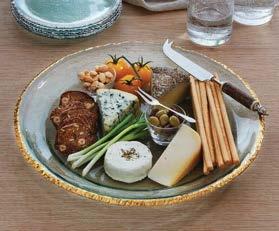
e Inn at Spanish Bay, 2700 17-Mile Drive 866.543.9318 • www.pebblebeach.com/dining
At Pèppoli, the scents of Italian herbs and spices ll the air, and the décor transports you to a cozy Tuscan villa. e menu is big and bold, ripe with traditional pastas, seafood and meats. e extraordinary wine list is matched by equally impressive dishes, including delicious desserts, all with stunning views of Spanish Bay. Open daily 5:30–10pm.
Roy’s at Pebble Beach
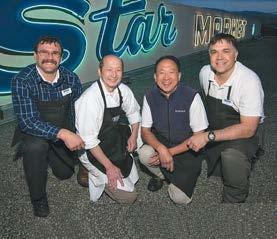
e Inn at Spanish Bay, 2700 17-Mile Drive 866.543.9318 • www.pebblebeach.com/dining
It’s all about big avors and the gorgeous ocean view at Roy’s at Pebble Beach. Fresh seafood is front and center, where sushi, sashimi and blackened rare Ahi tuna are prepared to perfection, but many exciting meat dishes and island salads are also featured on the extensive Hawaiian-fusion menu. Add a dynamic wine list, exceptional desserts and an energetic environment, and you have one impressive dining experience, all overlooking Spanish Bay. Open daily for breakfast 6:30–11am, lunch 11:30am–5pm, dinner 5:30–10pm.
Stave Wine Cellar at Spanish Bay

e Inn at Spanish Bay, 2700 17-Mile Drive 866.543.9318 • www.pebblebeach.com/dining
A combined wine lounge and retail shop, Stave Wine Cellar is a luxurious yet casual space that is ideal for special wine dinners or gathering with friends and colleagues. You can pair varietals by the glass with a menu of cheese and charcuterie plates. In addition to nearly 30 wines and eight craft beers by the glass, Stave has more than 200 wines for purchase by the bottle, including a wide selection of coveted bottles. A knowledgeable sta , including certi ed sommeliers are on-hand. Open Tu–Sa 2–10pm, Su–M 2–7pm.
Sticks






e Inn at Spanish Bay 2700 17-Mile Drive 866.543.9318 • www.pebblebeach.com/dining
Open for breakfast, lunch and dinner, Sticks is the perfect place for seasonally diverse California cuisine in a lively sports bar atmosphere. Savor a tasty meal, a cold draft beer, specialty cocktail or one of the many appetizers, while enjoying sports on at-screen TVs. Outside on the patio, enjoy seating next to a re pit while soaking up gorgeous views of The Links at Spanish Bay and the Paci c Ocean along with nightly bagpiper music. Ask about specials and new menu additions. Open daily 6am–9pm.
Stillwater


Bar & Grill
e Lodge at Pebble Beach, 1700 17-Mile Drive 866.543.9318 • www.pebblebeach.com/dining
Stillwater Bar & Grill prides itself in offering the freshest and most flavorful in sustainable seafood and organic produce. Whether it’s breakfast, lunch or dinner—or Stillwater’s famous Sunday Brunch—the menus are sure to delight. Shell sh lovers will marvel at the bountiful seafood tank, while those who prefer turf to surf can choose from a variety of meaty options. Each of these delectable feasts is enhanced by fantastic views of Carmel Bay and the 18th hole of Pebble Beach Golf Links. Open daily 7am–10pm.
64 edible MONTEREY BAY WINTER 2018
1275 Green Valley Rd., Watsonville ✦ www.LiveEarthFarm.net Growing Together since 1996 JOIN OUR YEAR ROUND CSA! – Customizable shares – Plastic-free packaging – Starting at $25 per week – Fresh bread, eggs, honey and preserves available Give the gift of healthy food this Holiday Season! New members receive $5 o your rst order, use code HEARTBEET at sign up. 1275 S Main St Salinas starmkt.com CALL US OR ORDER ONLINE Delivery & Curbside Pick Up Now Available! THE FRIENDLY STORE Shop Our Glassware, Sculpture, Artisanal Jewelry & Home Decor Wine & Beer Bar, Craft Workshops & Studio Tours 310 Harvest Drive, Watsonville, CA | 831.761.2041 x121 SUSTAINABLY HANDCRAFTED IN CALIFORNIA Shop Online 24/7: www.annieglass.com
e Tap Room

e Lodge at Pebble Beach, 1700 17-Mile Drive 866.543.9318 • www.pebblebeach.com/dining
e Tap Room is more than a legendary 19th hole with an outstanding selection of draft and bottled beers, vintage wines and top quality spirits. It’s also a world-class steakhouse serving up hearty all-American fare, from burgers to prime rib to let mignon. Renowned for its extensive collection of prized golf memorabilia, e Tap Room is a comfortable and inviting place for watching televised sporting events or recounting your successes on the courses of Pebble Beach. Open daily 11am–12am.
SAN JUAN BAUTISTA
Vertigo Co ee Roasters
81 Fourth Street 831.623.9533 • www.vertigoco ee.com





Artisanal co ee roasted on site as well as fresh pastries baked in-house, brunch items, local craft beers plus wood- red pizzas have made Vertigo a locals’ favorite as well as a great nd for visitors en route to the San Juan Mission, Pinnacles or other area attractions. Open M–W 7am–3pm, –Su 7am–9pm.

SANTA CRUZ



515 Kitchen & Cocktails

515 Cedar Street 831.425.5051 • www.515santacruz.com
ere’s nothing quite like rooftop dining—the expanse, the view, the feeling of being high above. In Santa Cruz, there’s no better place than multi-level 515 Kitchen & Cocktails to sip on an astounding cocktail with a witty name and nosh on inventive small plates while gazing down at Cedar Street, especially following the Wednesday farmers’ market, when there is unmatched hustle and bustle. You’ll even nd some of that produce on your plate, seasonally crafted by chef Paul Queen, as well as in your glass, courtesy of bar manager Ethan Samuels. But if the outdoor vantage point feels too exposed, any of the cozy nooks or barstools upstairs, or calming tablescapes downstairs are sure to suit your mood. Open M–Tu 5pm–12am, W–F 5pm–1:30am, Sa 3pm–1:30am, Su 3pm–12am.
Alderwood 155 Walnut Avenue 831.555.0109 • www.alderwoodsantacruz.com

Slated to open this fall, Alderwood is a neighborhood oyster bar and restaurant for people looking for a fun and friendly night on the town. Its emphasis is on cocktails and beef, with a wide variety of steaks cooked over the wood- red grill. Partner and chef Je rey Wall—an Iowa native and previously opening chef at Atlanta’s top-rated Kimball House farm-totable restaurant—believes in local sourcing and plans to make good use of the downtown Santa Cruz farmers’ market, practically across the street. Open T–Su 4pm–close, Happy Hour 4–7pm.
an epicurious lifestyle 104 Bronson Street, Suite 13 831.588.7772 • www.anepicuriouslifestyle.com



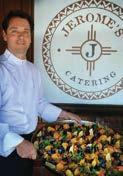

An event-based commercial kitchen and dining space in the historic Seabright Cannery building, an epicurious lifestyle is available for unique private events and hosts a monthly, seasonal family-style dinner for 20

www.ediblemontereybay.com 65 Tasting Room @ the Old Sash Mill Open Daily 12-5 pm (831)458-5030 Visit our new site: WINERY @ THE QUARRY IN CORRALITOS Open Saturday & Sunday 12-5 pm (831) 724-5030 STORRSWINE.COM
Monday thru Saturday 7 am–7 pm; Sunday 7 am–6 pm 2 Chambers Lane, Carmel Valley, CA www.JeromesCarmelValleyMarket.com • (831) 659-2472 Stay cozy this winter with delicious prepared foods to go and the freshest and most high-quality ingredients for your own cooking from your neighborhood grocer! SPECIALTY MARKET • DELI • BUTCHER • CATERING • CRAFT BEER LOCAL & ORGANIC PRODUCE • NATURAL MEATS & SEAFOOD LOCAL & IMPORTED WINE • FINE CHEESE • SANDWICHES • SALAD BAR HOMEMADE SAUSAGES • CUSTOM CUTS • FLOWERS • ESPRESSO
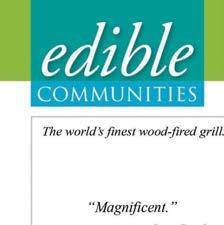







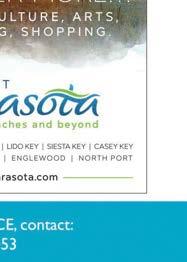



that is open to the public. Other public events also have a limited number of tickets; check the website for future dates and to sign up for email invites.
Charlie Hong Kong
1141 Soquel Avenue 831.426.5664 • www.charliehongkong.com






Charlie Hong Kong has been providing the Santa Cruz community with healthy, sustainable, a ordable and high-quality food since 1998. e colorful, casual eatery’s delicious fusion of Southeast Asian in uences and the Central Coast’s local organic produce has made it an inclusive, family-friendly, neighborhood favorite. Its slogan is “love your body, eat organic,” and its cuisine is proof that fast food can be good for you. All signature dishes are vegan with the option to add meat or sh. Gluten-free modi cations available. Dog friendly. Open daily 11am–11pm.
e Crow’s Nest 2218 E. Cli Drive 831.476.4560 • www.crowsnest-santacruz.com
A perfect spot to enjoy lunch or catch a sunset over the harbor, the nautical-themed Crow’s Nest is a Santa Cruz institution that never goes out of style. ere’s always something happening, from free seasonal ursday night beach parties to comedy nights and happy hours. Famous for its salad bar and housesmoked salmon, e Crow’s Nest is a member of Seafood Watch and is a certi ed green business. Open daily for breakfast 7:30am–11:30am; lunch M–F 11:30am–2:30pm and Sa–Su 11:30am–3pm; dinner M–F 5pm, Sa–Su 4:30pm.
Laílí







101B Cooper Street 831.423.4545 • www.lailirestaurant.com
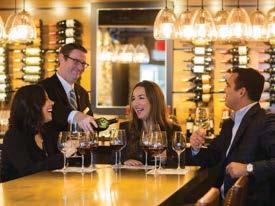


Exotic avors of the Silk Road are served in a stylish dining room decorated in eggplant and pistachio colors and on a hidden candlelit patio. Locals rave about Laílí’s homemade naan served warm from the oven with a selection of Mediterranean dips. ere is a wide variety of deliciously spiced vegetable dishes and all meats are hormone free and free range. Open for lunch Tu–Su 11:30am–2:30pm, dinner 5pm–close.
La Posta 538 Seabright Avenue 831.457.2782 • www.lapostarestaurant.com

A cozy neighborhood bistro not far from the Santa Cruz yacht harbor, La Posta chef Katherine Stern prepares Northern Italian cuisine using local ingredients—some foraged and some grown on nearby organic farms. Charcuterie is house cured; pasta, bread, and gelati are made in-house, while the balance of the menu re ects whatever produce is freshest right now. A sister restaurant of Soif Restaurant and Wine Bar, La Posta also o ers a great selection of wines. Open Tu– 5–9pm, F–Sa 5–9:30pm, Su 5–8:30pm, M closed.
Pearl of the Ocean 736 Water Street 831.457.2350 • m.mainstreethub.com/pearloftheocean Award-winning chef/owner Ayoma Wilen goes beyond the expected traditional spice-infused dishes of Sri Lanka, creating locally inspired daily specials using fresh, organic produce from farmers’ market

Drink well. Live well. Stockwell. Santa Cruz Urban Winery Tasting Room open ursday-Sunday www.stockwellcellars.com | (831) 818.9075 ©2018 Pebble Beach Company. Pebble Beach Resorts®, Pebble Beach®, Spanish Bay®, The Inn at Spanish Bay TM The Lone Cypress, The Heritage Logo and their respective distinctive images are trademarks, service marks and trade dress of Pebble Beach Company. An Intimate Wine Lounge & Cellar Enjoy wines by the glass, small bites and over 200 varietals for purchase by the bottle, including coveted, hard-to- nd wines. Expand your knowledge by joining our weekly Flight Nights and Wine Classes! Located at The Inn at Spanish Bay pebblebeach.com (831) 644-7997
produce and sustainably harvested seafood. Customer favorites include butternut squash curry, crab curry and wild salmon curry. To round out the avor experience, there is a dizzying array of sides, like coconut leek sambal and kale mallam. e warm colors, altars and blessings that decorate the space help guests get a sense of Sri Lanka’s world-class hospitality, culture and beauty. Open for lunch daily 11am–2:30pm; dinner Su– 5–9pm and F–Sa 5–9:30pm.
e Penny Ice Creamery

913 Cedar Street 831.204.2523 • www.thepennyicecreamery.com Lines out the front door of its converted Spanish bungalow are evidence of Penny’s popularity. All ice cream, including bases, is made from scratch on the premises using local organic ingredients when possible. Dozens of exotic avors rotate seasonally, but two favorites are chocolate caramel sea salt and strawberry pink peppercorn. Open daily noon–11pm. See also e Penny under Capitola.
e Picnic Basket
125 Beach Street 831.427.9946 • www.thepicnicbasketsc.com


Across the street from the main beach, owners of e Penny Ice Creamery have opened an alternative to boardwalk fast food. Sandwiches, organic salads, co ee and beer, all from local food artisans, and of course Penny’s popular ice cream, are all on o er to eat in or outside with your feet in the sand. Open daily 7am–4pm. Expanded hours some weekends and holidays. Expanded hours during summer.
Soif Restaurant and Wine Bar 105 Walnut Avenue 831.423.2020 • www.soifwine.com

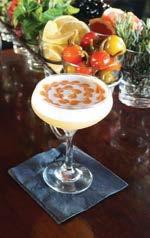


Inspired by the o erings from local farmers and provisioners, Soif’s cuisine shows California air with super, seasonal dishes, all paired with local and exotic wines (and a great burger!). A cozy, new bar offers cocktails in addition to the best wine selection in town. e bottle shop next door provides a world-
class selection of wines and a welcoming seating area for sipping and tasting. Raw oysters and live jazz every Monday. Open M– 5–9pm, F–Sa 5–10pm. Retail Shop & wine bar opens at noon Tu–Sa, and at 5pm Mondays.
West End Tap & Kitchen 334D Ingalls Street • 831.471.8115 www.westendtap.com

At West End, perfect for any parent who is looking for a happy hour to satisfy the whole family, adults and kids alike can’t get enough of the duck fat popcorn, fried calamari and atbread pizzas. A diverse, season-driven menu with o erings like seared scallops with mascarpone and lemon risotto, trumpet mushrooms, Marcona almonds and tarragon-basil vinaigrette, and a long list of craft beers, ciders and wine options make West End a Westside staple. The outdoor patio is perfect for people watching amidst the bustling Swift Street Courtyard. Open Su–Th 11:30am–9:30pm, F–Sa 11:30pm–10pm.
SCOTTS VALLEY
Kitchen Table/1440 Multiversity 800 Bethany Drive 844.544.1440 • www.1440.org
1440 is the number of minutes in each day, and at the new learning destination in Scotts Valley, 1440 represents the many opportunities there are to be mindful in this life we live. at philosophy certainly translates to the food we choose to eat, which makes the onsite Kitchen Table a wonderful canvas for showcasing the vibrant, healthful and delicious ingredients we have available locally. Chef Kenny Woods, who came here from Arizona to be part of this unique project, brings an intensive and enthusiastic culinary background to creating plant-based menus that change with every meal, every day, for the diverse, global community that gathers here. Registration for a 1440 program, personal getaway or special event is required to dine at Kitchen Table.
68 edible MONTEREY BAY WINTER 2018
SEASIDE
Gusto
1901 Fremont Boulevard 831.899.5825 • www.gustopizzeriapasta.com





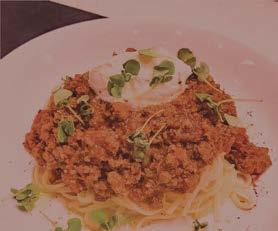
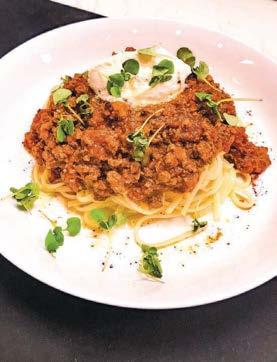

Gusto owner Denis Boaro, owner of Carmel’s Basil Seasonal Dining and a native of Northern Italy, named the restaurant for the Italian word for taste and his enthusiasm for delivering delicious authentic Italian food and great service that can be seen in the happy faces of his diners. e bright red-tiled, wood- red oven just inside the entrance sets the restaurant’s festive tone, making you feel like you are in Italy. Gusto specializes in fresh pastas, pizzas, housemade mozzarella as well as unique desserts using the best quality ingredients and organic ours from Italy. Our team strives to support local organic farmers, foragers and shermen bringing you fresh, tasty and sustainable ingredients. Open daily 11:30am–2:30pm, 4:30–9pm.
e Meatery





1534 Fremont Boulevard 831.656.8810 • www.themeatery.us



Meat-loving chef-owners Jason Balestrieri and Kevin Hincks have teamed up to create Monterey County’s rst modern, artisanal butchery where in addition to selling cuts of sustainably and humanely raised meats and housemade charcuterie to bring home, they also o er deli sandwiches and other prepared foods to eat around a communal table right in the shop. Catering for any occasion also available. Open daily 11am–7pm.

831-335-3976 We love our locals so here’s the 411 on our specials that start NOV 6 Pasta Special & choice of beverage* POT PIE NIGHT Chicken in a cream sauce with winter vegetables and potaoes in a pu pastry & choice of beverage* TACO TUESDAY & choice of beverage* Tuesday Nights Wednesday Nights Thursday Nights *Includes a $7.00 discount on your choice of beverage. 5-7:30 p.m. While supplies last. $15 each vegetarian options available each night •AN AMERICAN RESTAURANT & ALEHOUSE• Thoughtfully prepared meals with organic ingredients •21 rotatating beer taps •10 wine taps www.ediblemontereybay.com 69 Please visit our website to nd the Local Source Guide with pro les of all our wonderful advertisers
Edible Monterey Bay reaches a devoted readership of active local consumers who are passionate about supporting local businesses—especially ones that advertise in Edible Monterey Bay.
“Every time I picked up Edible Monterey Bay I saw our customers and I knew that we needed to be in the same space,” says Mary Anne Carson, senior vice president, director of marketing and community relations at Santa Cruz County Bank, describing why she started advertising in EMB three years ago. “I think we share many of the same values as the businesses that advertise and are pro led in the magazine. Over the last few years, the crossover has grown tremendously.”

Average print run of 27,500 per issue x 2.8 adult readers = 77,000 print readers plus thousands more online.
95% of readers say they read the ads in EMB.

Influential: 96.7% recommend products they like to people they know

Willing to pay more for quality: 93% say they will pay more for local, organic or humanely raised
84% of readers say they are more apt to frequent a business because it advertises in EMB.

350+ strategic outlets across Monterey, Santa Cruz & San Benito counties.
Fast-growing and engaged social media followers and an e-newsletter with twice the open and click rates of the average media industry newsletter.

Our Readers Are

Well Educated: 98% have had some college; 32% have a master’s or doctoral degree

Green: 99% say sustainable practices are important to them
Loyal: 95.6% say when they find a restaurant they like, they stick with it

Health Oriented: 97.4% say they look for healthier food options
Monterey Bay
CONTACT US: ads@ediblemontereybay.com or 831.600.8281

Source: Gfk MRI survey 2015; prior EMB Survey

70 edible MONTEREY BAY WINTER 2018
YOU WANT CUSTOMERS? YOU’LL WANT EMB.
edible






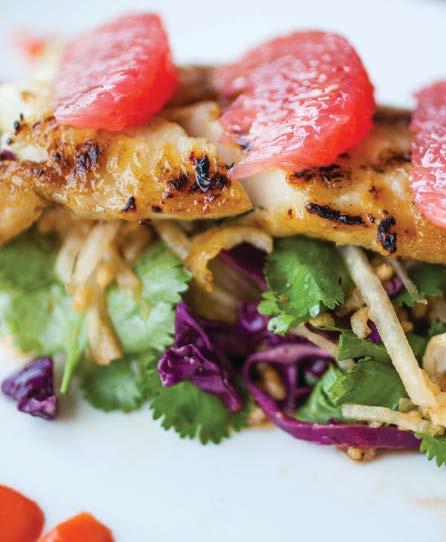
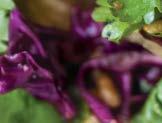


www.ediblemontereybay.com 71 Eco-Friendly, Quick-Drying, Turkish Bamboo & Cotton Towels +Silk Road Holiday Gifts check TheActiveTowel.com for hours call 831.515.8022 for an appointment ours Find us at: Quail & Olive Carmel Belle bigsursalts.com Craft salts that bring the colors, tastes and aromas of Big Sur to you Mobile Service Passionfishrestaurant VoVoted Best Restaurant Monterey County 2018-2014, 2012-2011 Voted Best Restaurant Pacific Grove 2018-2005 ~ Monterey County Weekly ~ Carmel Pine Cone 2018 James Beard National Wine Program Semi-Finalist 701 Lighthouse Ave Pacific Grove, CA 831.655.3311 • passionfish.net Served nightly from 5pm Voted Best Restaurant Pacific Grove 2018, 2015, 2010, 2009 Voted Best Restaurant for Seafood 2018, 2016-2008 Eat responsibly. www.readycyclepackaging.com reduce plastic, go sustainable 100% recyclable. Sustainable for the planet. Good for your produce. ®
BROWN BUTTER-BAY LAUREL COOKIES

Irresistibly rich and savory
By RON MENDOZA Photography By Margaux Gibbons
8 ounces butter 1 bay leaf ¼ cup sugar ½ cup brown sugar 2 eggs
cup flour ½ cup whole wheat flour ¼ cup spelt flour ½ cup oats 1 teaspoon sea salt ½ teaspoon baking soda 1 teaspoon cinnamon 1 teaspoon ground ginger
In a medium pan, melt the butter with the bay leaf. Continue to cook butter over a medium-low heat until the butter becomes a light brown color and smells nutty. Remove from heat and set aside.
In a bowl, whisk together the sugars and eggs until slightly fluffy. Remove bay leaf from the butter and pour butter into sugar mixture. Whisk until combined.
Sift in dry ingredients and fold by hand using a spatula. Let dough rest for 20 minutes. Roll into golf ball-sized balls and chill overnight.
Bake in a 350° F oven for 8–10 minutes.
This cookie works well with the addition of dried cranberries, walnuts or dark chocolate chips. Makes about 18 cookies.
LAST BITE
¼
72 edible MONTEREY BAY WINTER 2018





74 edible MONTEREY BAY WINTER 2018

































 BY ROSEANN HERNANDEZ CATTANI PHOTOGRAPHY BY MICHELLE MAGDALENA
BY ROSEANN HERNANDEZ CATTANI PHOTOGRAPHY BY MICHELLE MAGDALENA







 BY KATHRYN MCKENZIE PHOTOGRAPHY BY BY DAVID ROYAL
BY KATHRYN MCKENZIE PHOTOGRAPHY BY BY DAVID ROYAL
















































































































































 BY JOHN COX PHOTOGRAPHY BY PATRICK TREGENZA AND JOHN COX
BY JOHN COX PHOTOGRAPHY BY PATRICK TREGENZA AND JOHN COX












 Courtesy chef Craig von Foerster
Courtesy chef Craig von Foerster








 BY AMBER TURPIN PHOTOGRAPHY BY CRYSTAL BIRNS
BY AMBER TURPIN PHOTOGRAPHY BY CRYSTAL BIRNS




 BY JESSICA TUNIS PHOTOGRAPHY BY CRYSTAL BIRNS
BY JESSICA TUNIS PHOTOGRAPHY BY CRYSTAL BIRNS












































































































































